Vous pouvez lire le billet sur le blog La Minute pour plus d'informations sur les RSS !
Canaux
4770 éléments (3 non lus) dans 55 canaux
 Du côté des éditeurs
(1 non lus)
Du côté des éditeurs
(1 non lus)
 Toile géomatique francophone
(2 non lus)
Toile géomatique francophone
(2 non lus)
 Géomatique anglophone
Géomatique anglophone
-
sur Mappery: World Time
Publié: 13 September 2024, 11:00am CEST
Pièce jointe: [télécharger]

Michel Stuyts asks “Am I the only one who sees this kind of clock in a shop and the first thing that comes to mind is: I wonder what kind of projection they used?”
The answer is definitely not! There are thousands of map lovers here who would love to answer you Michel
-
sur Create an AI Poster for Your Location
Publié: 13 September 2024, 10:59am CEST par Keir Clarke
The Global Culture Map is a fun little tool which uses AI to create a poster for any location chosen on an interactive. Simply click on the Global Culture Map and it will use a generative AI to design a poster based on that location.Currently I would say that the Global Culture Map is an interesting fun experiment rather than a completed, fully-realized AI poster creation tool. At the moment the
-
sur Fernando Quadro: 5 maneiras de usar IA generativa em seus aplicativos geoespaciais
Publié: 12 September 2024, 2:00pm CEST
A IA generativa claramente faz jus ao hype. Onde a localização importa, os LLMs trazem muitas oportunidades para melhorar seus aplicativos GIS e facilitar as interações com os usuários ao introduzir solicitações de linguagem natural.
Aqui estão 5 maneiras de usar IA generativa em seus aplicativos geoespaciais:
 Melhore a busca por dados com pesquisa semântica
Melhore a busca por dados com pesquisa semântica
A pesquisa semântica melhora drasticamente os resultados de uma pesquisa lexica simples porque a IA entende o significado das solicitações, sem prestar atenção às palavras escolhidas.
A pergunta “Quando as lixeiras são recolhidas” encontrará resultados sobre “Política de coleta de lixo”, enquanto a pesquisa lexica não pode corresponder a nenhuma palavra.
Você pode ir além e usar uma abordagem híbrida (mesclando léxico e semântico) para ajustar sua pesquisa. Enriqueça seu conjunto de dados extraindo dados estruturados de texto não estruturado
Enriqueça seu conjunto de dados extraindo dados estruturados de texto não estruturado
Os LLMs podem extrair valores estruturados de dados não estruturados, como texto. Quando você tem apenas um título e/ou uma descrição sobre seu conjunto de dados, a IA pode extrair palavras-chave, temas ou qualquer outra informação contextual contida na descrição. Essas informações extraídas podem então ser indexadas para ajustar a pesquisa. Este método pode ser usado para enriquecer registros de metadados e conjuntos de dados.
Por exemplo, extrair pontos de vista de uma descrição de trilha Conduza seu aplicativo geoespacial com ferramentas e chamadas de função
Conduza seu aplicativo geoespacial com ferramentas e chamadas de função
Com a chamada de função, os modelos de IA fornecem uma maneira de especificar diferentes ações que o LLM deve entender de sua solicitação e chamar os métodos apropriados com os argumentos correspondentes diretamente do seu código. Você pode então conduzir seu aplicativo por solicitações naturais (texto ou voz).
Por exemplo: Adicione ciclovias ao mapa, ative o modo escuro etc. Desenvolva habilidades de inteligência de localização com modelos text2sql específicos
Desenvolva habilidades de inteligência de localização com modelos text2sql específicos
Modelos de IA específicos realmente brilham ao transformar uma solicitação do usuário em uma consulta SQL. Isso permite que o usuário solicite qualquer informação complexa oculta em seu banco de dados. O modelo definitivo para aplicações geoespaciais pode ser um modelo text2postgis que permite qualquer consulta espacial para sua aplicação, como junções espaciais, buffers, agrupamento, distribuições h3 e muito mais possibilidades.
Por exemplo: encontre todos os restaurantes a 1 km de qualquer hotel em Paris. Crie seu chatbot personalizado com agentes
Crie seu chatbot personalizado com agentes
Com agentes, você pode usar LLMs para escolher uma sequência de ações a serem tomadas. Isso significa que a IA escolherá por conta própria quais métodos chamar, sequencialmente, para responder à sua solicitação. Uma dessas ações pode ser pedir esclarecimentos ao usuário sobre sua solicitação, criando uma conversa com o usuário. Além disso, ajuda a entender como a IA constrói os resultados, pois o agente está lhe dizendo o que ele está realmente fazendo para atender à sua demanda.Por exemplo: encontre todos os restaurantes a 1 km de qualquer hotel em Paris.
 Extraindo a geometria de Paris
Extraindo a geometria de Paris
 Colocando todos os hotéis contidos nessa geometria
Colocando todos os hotéis contidos nessa geometria
 Construindo um buffer de 1 km ao redor das geometrias de pontos de hotéis
Construindo um buffer de 1 km ao redor das geometrias de pontos de hotéis
 Colocando todos os restaurantes contidos nesses buffers
Colocando todos os restaurantes contidos nesses buffersComo você vê, a IA Generativa oferece habilidades inestimáveis ??para impulsionar seus aplicativos geoespaciais para o próximo nível e realmente ajudar seus aplicativos a serem realmente consumidos pelos usuários. Ao combinar todas essas técnicas, você pode acabar construindo um chatbot de inteligência de localização para resolver quaisquer preocupações territoriais e ajudar no processo de tomada de decisão em qualquer escala.
Fonte: webgis.tech
Instagram: [https:]]
LinkedIn: [https:]] -
sur Mappery: Salt Lake City Woodcarving
Publié: 12 September 2024, 11:00am CEST
Pièce jointe: [télécharger]

Matt Malone shared this, he said “Stumbled upon this excellent woodcarved street map of Salt Lake City recently. Airports should have their own #MapsInTheWild category.” We don’t really do categories on Mappery because I would forget to tag things and Arnaud or Dan would probaly tag them differently and there chaos lies.
Cracking piece of woodwork though!
-
sur The EJAtlas: A Map for Environmental Justice
Publié: 12 September 2024, 8:49am CEST par Keir Clarke
Around the world the ever demanding quest for economic growth and profit is having an impact on natural environments. The result is that local communities and groups are often forced into fighting governments and multinational companies in order to try to save their local environments from the eternal forces of 'progress'.The Environmental Justice Atlas has set itself the task of documenting
-
sur GeoServer Team: CVE-2024-36401 Remote Code Execution (RCE) vulnerability in evaluating property name expressions
Publié: 12 September 2024, 2:00am CEST
The GeoServer community has been under considerable strain responding to CVE-2024-36401. This vulnerability stems from GeoTools library CVE-2024-36404.
This vulnerability, in the handling of XPath expressions, affords a “remote code execution” attack that is under active exploit. A remote code execution (RCE) attack allows an attacker to run malicious code on your computer or network.
For more information:
- GeoServer 2.25.2 Release (Jun 18, 2024)
- GeoServer 2.24.4 Release (Jun 18, 2024)
- CVE-2024-36401 (July 1, 2024)
- CISA Warns of Actively Exploited RCE Flaw in GeoServer GeoTools Software (The Hacker News, July 18, 2024)
- GeoServer Vulnerability Targeted by Hackers to Deliver Backdoors and Botnet Malware (The Hacker News, September 6, 2024)
You are responsible for running a GeoServer instance that has not been updated.
-
CVE-2024-36401 provides mitigation instructions which you should perform immediately.
Please stop reading and do this now.
-
Update your instance: Upgrading existing versions (User Guide)
The instructions include notes on upgrading specific versions. Please read carefully to see if any manual changes are required.
With such a serious issue several service providers have stepped forward to make fixes available for prior releases.
Full release:
- GeoServer 2.23.6 Release (GeoCat)
Patch provided with CVE-2024-36401 report:
- GeoServer 2.25.1 (GeoSolutions)
- GeoServer 2.24.3 (GeoSolutions)
- GeoServer 2.24.2 (GeoSolutions)
- GeoServer 2.23.2 (GeoSolutions)
- GeoServer 2.22.2 (GeoSolutions)
- GeoServer 2.21.5 (GeoSolutions)
- GeoServer 2.21.4 (GeoSolutions)
- GeoServer 2.20.7 (GeoSolutions)
- GeoServer 2.20.4 (GeoSolutions)
- GeoServer 2.19.2 (GeoSolutions)
- GeoServer 2.18.0 (GeoSolutions)
Free software is a participation sport - to create a patch for a prior release volunteer with community development.
Q: How often should I upgrade GeoServer?GeoServer operates with a time boxed release cycle, maintaining “stable” and “maintenance” releases, over the course of a year.
-
Upgrade GeoServer twice a year as new stable releases are made.
-
Once the release you are using has entered “maintenance” it is a good idea to upgrade (before the release is no longer supported).
-
GeoServer security policy provides one year of support. You may also contact our service providers for extended support beyond this timeframe.
Stay up to date:
-
Please monitor release announcements for the heading “Security Considerations”.
Security Considerations
This release addresses security vulnerabilities and is considered an essential upgrade for production systems.
- CVE-2024-36401 Critical
You can review the release announcement, and in this case with a “Critical” vulnerability decide to update.
-
When everyone has had an opportunity to update the details of the vulnerability are announced.
Security Considerations
This release addresses security vulnerabilities and is considered an essential upgrade for production systems.
- CVE-2024-36401 Remote Code Execution (RCE) vulnerability in evaluating property name expression (Critical)
-
As GeoServer has now adopted use CVEs for publication you may also have success with vulnerability scanning tools.
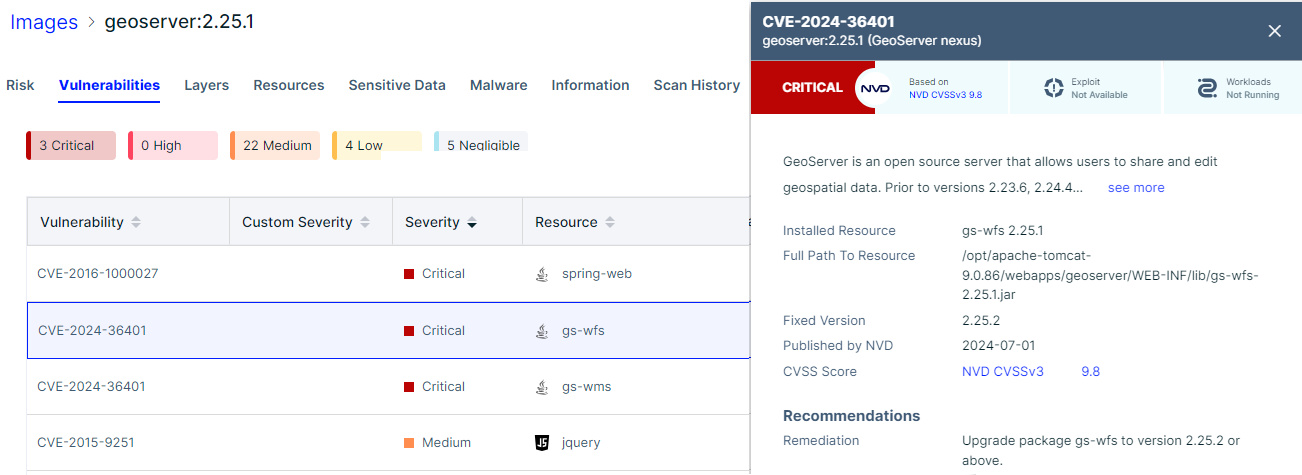
These tools function when the vulnerability is published, and do not provide any advance notice.
As security reports contain sensitive information they are only shared with representatives of the geoserver-security email list.
Participation in geoserver-security, like commit access, is volunteer based and reflects trust.
Please review GeoServer Security Policy if you are in a position to help out.
-
sur Bentley Systems increases investment in OGC and reinforces commitment to Open Standards following Cesium acquisition
Publié: 11 September 2024, 3:00pm CEST par Simon Chester
The Open Geospatial Consortium (OGC) is pleased to announce that infrastructure engineering software company Bentley Systems is increasing its investment and engagement in OGC—and further strengthening its commitment to growing an open ecosystem.
Bentley recently acquired Cesium, a fellow OGC member and the creator of 3D Tiles, an OGC Community Standard for massive heterogenous 3D geospatial content.
Bentley’s increased investment in OGC, coupled with its acquisition of Cesium, signals their commitment to a future built around open standards, data, and infrastructure. OGC’s trusted community of problem solvers leverages the power of geography, open standards, and interconnected systems to address real-world problems while opening up opportunities for commercial growth.
“We are pleased to see this increased investment in OGC by Bentley, and their support to us as a Principal member,” said Peter Rabley, Chief Executive Officer, OGC. “As a Principal Member of OGC, Bentley will play a significant role serving on OGC’s Executive Planning Committee and participating in final approval decisions for all OGC Standards and nominations to the Board of Directors.”
Patrick Cozzi, Chief Platform Officer, Bentley, and Cesium founder, commented, “The success and impact of 3D Tiles as an open standard reinforces our belief that openness and interoperability are essential to making the best use of location information to benefit society. We look forward to continuing to work within the OGC community as part of Bentley.”
“Bentley is a strong supporter of open data ecosystems,” added Julien Moutte, Chief Technology Officer, Bentley Systems. “As a principal member of OGC, we are committing further resources to accelerate the development and adoption of open standards that benefit applications for the built and natural environment.”
About OGC
The Open Geospatial Consortium (OGC) is a membership organization dedicated to using the power of geography and technology to solve problems faced by people and the planet. OGC unlocks value and opportunity for its members through Standards, Innovation, and Policy & Advocacy. Our membership represents a diverse and active global community drawn from government, industry, academia, international development agencies, research & scientific organizations, civil society, and advocates.
Visit ogc.org for more information about our work.About Bentley Systems
Bentley Systems (Nasdaq: BSY) is the infrastructure engineering software?company. Bentley provides innovative software to advance the world’s infrastructure – sustaining both the global economy and environment. Bentley’s industry-leading software solutions are used by professionals, and organizations of every size, for the design, construction, and operations of roads and bridges, rail and transit, water and wastewater, public works and utilities, buildings and campuses, mining, and industrial facilities. Bentley’s offerings, powered by the iTwin?Platform for infrastructure digital twins, include MicroStation and Bentley Open?applications for modeling and simulation, Seequent’s software for geoprofessionals, and Bentley Infrastructure Cloud encompassing ProjectWise?for project delivery, SYNCHRO?for construction management, and AssetWise?for asset operations. Bentley Systems’ 5,200 colleagues generate annual revenues of more than $1 billion in 194 countries.About Cesium
Cesium is the open platform for 3D Geospatial. Cesium created 3D Tiles, the Open Geospatial Consortium community standard for streaming massive 3D geospatial datasets. Use Cesium ion to optimize, host, and combine your data with curated global 3D content and stream to any device. With unique expertise at the intersection of 3D geospatial and computer graphics, Cesium is deeply committed to openness and interoperability through open standards, open APIs, and open source offerings like CesiumJS, Cesium for Unreal, Cesium for Unity, and Cesium for Omniverse. Originally built for Aerospace, Cesium is now used to power thousands of applications in industries like Defense, Architecture, Engineering, Construction and Operations, Commercial real estate, urban planning, and more.The post Bentley Systems increases investment in OGC and reinforces commitment to Open Standards following Cesium acquisition appeared first on Open Geospatial Consortium.
-
sur The Map to the White House
Publié: 11 September 2024, 11:20am CEST par Keir Clarke
NBC has launched the 2024 edition of its Road to 270 interactive electoral college map. The map visualizes the current likely, possible and fantastical outcomes of the 2024 U.S. Presidential race. Last night Kamala Harris and Donald Trump went head-to-head in their first presidential debate. The Philadelphia debate was a hugely significant opportunity for both Harris and Trump to present their
-
sur Mappery: La Tharee
Publié: 11 September 2024, 11:00am CEST
Pièce jointe: [télécharger]

Julien Minet shared this spectacular mappy beer bottle. “Here again an association of cartography and beers, a hand-drawn map of some part of the Ardenne printed on a special edition of the Belgian beer La Tharée”
-
sur Sean Gillies: Fiona 1.10.0
Publié: 11 September 2024, 3:16am CEST
I made a software release last Tuesday. One with new features, deprecations, major refactoring, and packaging and dependency changes, not just bug fixes. Fiona 1.10.0 has three main changes: Python openers, CLI filter commands, and new data classes.
Python openers can connect filesystems implemented in Python, like fsspec or tiledb.vfs, to GDAL's own virtual filesystem machinery. In most cases, you should reply on GDAL's built-in virtual filesystem handlers. On the other hand, if you have unique or proprietary data access protocols, then Fiona's new openers may be useful. As far as I know, Fiona (and Rasterio) have the only open source implementations of GDAL's virtual filesystem plugin system. David Hoese had the initial idea, Even Rouault helped a lot, and I got it over the finish line. I think this is right up there with MemoryFile for my favorite feature that didn't exist in Python-GIS software before.
Fiona's CLI has three new commands, filter (strictly speaking, a new mode of this command), map, and reduce. These provide some great features for Unix-style data processing pipelines and are designed to work well with jq and programs of that nature. Think of them as the data processing part of ogr2ogr, split into 3 simpler commands, reading and writing to stdin/stdout by default, with no SQL and no need to know about different SQL dialects. The documentation contains a new tutorial about using filter, map, and reduce. This work began in planetlabs/fio-planet and now lives in the Fiona CLI core. Thank you, Tim Schaub, for stewarding the transition.
Lastly, Fiona now longer represents GIS features (and their geometries and properties) as Python dicts, but as Python classes:
fiona.model.Feature,fiona.model.Geometry, andfiona.model.Properties. These classes provide dict-like access for backwards compatibility, but raise warnings when mutated. These data classes will be immutable in version 2.0.A lot of GIS-Python attention has moved on to columnar data and massive amounts of time series, trajectories, telemetry, etc, using Parquet and Arrow. But, there's still a need to reason about persistent spatial things in our world and their relationships to each other. Classic GIS features, in other words. Watersheds, counties, neighborhoods. That's what Fiona remains concerned about.
-
sur Camptocamp: GeoServer 3 Call for Crowdfunding
Publié: 11 September 2024, 2:00am CEST
Pièce jointe: [télécharger]
GeoServer is at a critical turning point and it needs your help to continue its journey as the leading free and Open Source platform for geospatial data. With GeoServer 3 we are transforming the way you interact with geospatial data—making it faster, more intuitive, and more secure. -
sur Fernando Quadro: GeoServer 3 – Campanha de Crowdfunding
Publié: 10 September 2024, 9:49pm CEST
O GeoServer precisa da sua ajuda para continuar sua jornada como a principal plataforma gratuita e de código aberto para dados geoespaciais. Com o GeoServer 3, estamos transformando a maneira como você interage com dados geoespaciais, tornando-os mais rápidos, intuitivos e seguros.
Esta grande atualização, liderada pela Camptocamp, GeoSolutions e GeoCat, fornecerá:
- Desempenho futuro: um núcleo modernizado para compatibilidade com as mais recentes tecnologias de gerenciamento e implantação de dados.
- Processamento de imagem aprimorado: manuseio mais rápido e suave de imagens espaciais e conjuntos de dados maiores.
- Segurança e conformidade aprimoradas: atenda aos padrões regulatórios e proteja seus dados com os mais recentes aprimoramentos de segurança.
- Experiência do usuário simplificada: navegação mais fácil, integração de novos serviços e capacitação de usuários em todos os níveis.
O escopo deste trabalho está além de atualizações de rotina ou manutenção, já que a transição para o GeoServer 3 requer um amplo redesenvolvimento dos sistemas principais, bem como a implementação de práticas de segurança modernas e também testes e validação completos em todas as extensões do GeoServer.
Os membros do consórcio – Camptocamp, GeoSolutions e GeoCat – têm uma longa história de suporte e contribuição ao GeoServer e estão totalmente comprometidos com o sucesso desta migração. No entanto, este é um grande esforço que não pode ser concluído sem o suporte da comunidade.
Ao apoiar esta campanha de crowdfunding, você está investindo no futuro do GeoServer e ajudando a sustentar a comunidade geoespacial inovadora e de código aberto.
1. Por que GeoServer 3?
À medida que o cenário digital evolui, manter-se atualizado com as últimas tecnologias não é mais opcional — é essencial. O GeoServer 3 está sendo desenvolvido para enfrentar desafios cruciais e garantir que o GeoServer continue sendo uma plataforma confiável e segura para o futuro. Vários fatores-chave tornam esta atualização crítica agora:
- Conformidade regulatória: Novas regulamentações, incluindo a lista de vulnerabilidades exploradas conhecidas da CISA, exigem que os sistemas sejam totalmente corrigidos para garantir a prontidão operacional. Sem as últimas atualizações, o GeoServer corre o risco de ficar aquém desses padrões, e é por isso que migrar para o Spring 6 é essencial.
- Fim do suporte para o Spring 5: Em janeiro de 2025, o Spring 5 não receberá mais atualizações de segurança, deixando os sistemas vulneráveis. Como o GeoServer opera como middleware entre serviços da web e camadas de dados essenciais, esta atualização para o Spring 6 é crucial para manter conexões seguras e proteger dados de possíveis violações.
- Melhorias de segurança: A atualização para o Spring 6 habilita protocolos OAuth2 para autenticação segura, especialmente crítica para uso em larga escala ou em nível empresarial. Esses avanços ajudarão as organizações a atender aos requisitos de segurança em evolução e proteger dados geoespaciais confidenciais.
- Mudança para o JDK 17: Esta atualização também marca a transição do GeoServer para o JDK 17, que traz melhorias em desempenho, segurança e suporte de longo prazo. Manter o GeoServer alinhado com as versões mais recentes do Java garante compatibilidade com as modernas tecnologias de implantação Tomcat 10 e Jakarta e prepara a plataforma para o futuro.
- Processamento de imagem aprimorado: O GeoServer 3 substituirá a biblioteca Java Advanced Imaging (JAI) desatualizada pelo kit de ferramentas ImageN mais moderno e flexível. Esta mudança aumentará significativamente os recursos de processamento de imagem, permitindo um manuseio mais rápido de grandes conjuntos de dados espaciais e melhorando a compatibilidade com Java.
- Conjunto de tecnologia à prova do futuro: Com a migração para o Spring 6 e a mudança para o JDK 17, o GeoServer 3 garante viabilidade de longo prazo. Abordar toda a pilha do GeoServer, incluindo os componentes corporativos GeoFence e Cloud Native GeoServer, permite que as organizações adotem perfeitamente a infraestrutura moderna e os modelos de implantação sem comprometer o desempenho ou a segurança.
Com este trabalho, o GeoServer está caminhando para um futuro mais seguro e de alto desempenho, pronto para atender às necessidades em evolução da comunidade geoespacial.
2. Sobre a Campanha de Crowdfunding
Embora o consórcio esteja totalmente comprometido com esse esforço, o tamanho da tarefa significa que precisamos de suporte financeiro adicional para que isso aconteça. É aqui que você entra. Ao contribuir para esta campanha de financiamento coletivo, você está apoiando diretamente os desenvolvedores e engenheiros que realizarão a atualização, garantindo o sucesso contínuo do GeoServer.
Seu suporte, seja como indivíduo, instituição pública ou provedor de serviços, é vital. Ao contribuir para esta campanha de financiamento coletivo, você está investindo no futuro da tecnologia geoespacial de código aberto. O financiamento coletivo será estruturado em duas fases para garantir o sucesso:
- Fase de compromisso: patrocinadores e membros da comunidade prometerão seu suporte financeiro durante esta fase, mas nenhum fundo será coletado. O objetivo é atingir uma meta predefinida que cubra todo o escopo de trabalho necessário para a migração.
- Ativação do financiamento: assim que a meta for atingida, o financiamento coletivo será ativado e os patrocinadores serão faturados pelos valores prometidos. Isso garante que haja suporte financeiro suficiente para concluir a migração sem correr o risco de subfinanciamento.
Essa abordagem estruturada garante que o GeoServer 3 seja totalmente financiado antes de qualquer trabalho começar, evitando o risco de uma migração incompleta. Isso garante que o projeto terá os recursos necessários para ser concluído em sua totalidade.
3. Como participar
O GeoServer tem a confiança de milhares de organizações no mundo todo. Agora é a hora de dar um passo à frente e se juntar a essa comunidade de apoiadores.
Ao doar, você ajudará a garantir o futuro do GeoServer como uma plataforma de alto desempenho e código aberto. Cada contribuição conta.
Pronto para dar suporte ao GeoServer 3? Entre em contato pelo e-mail gs3-funding@googlegroups.com para expressar seu interesse ou prometer seu apoio.
Juntos, podemos garantir o futuro do GeoServer nos próximos anos.
-
sur GeoCat: GeoServer 3 Call for Crowdfunding
Publié: 10 September 2024, 5:35pm CEST
GeoServer is at a critical turning point and it needs your help to continue its journey as the leading free and open-source platform for geospatial data. With GeoServer 3 we are transforming the way you interact with geospatial data—making it faster, more intuitive, and more secure.
This major upgrade, led by Camptocamp, GeoSolutions, and GeoCat, will deliver:
-
Future-Proof Performance: A modernized core for compatibility with the latest data management and deployment technologies.
-
Enhanced Image Processing: Faster, smoother handling of spatial imagery and larger datasets.
-
Improved Security and Compliance: Meet regulatory standards and protect your data with the latest security enhancements.
-
Streamlined User Experience: Easier navigation, integrating new services, and empowering users at all levels.
The scope of this work is beyond routine updates or maintenance since the transition to GeoServer 3 requires extensive redevelopment of core systems as well as implementing modern security practices and also thorough testing and validation across all GeoServer extensions.
The consortium members – Camptocamp, GeoSolutions, and GeoCat– have a long-standing history of supporting and contributing to GeoServer and are fully committed to the success of this migration. However, this is a major effort that cannot be completed without community support.
By supporting this crowdfunding campaign, you are investing in the future of GeoServer and helping to sustain the innovative, open-source geospatial community.
Why GeoServer 3As the digital landscape evolves, staying up-to-date with the latest technology is no longer optional — it’s essential. GeoServer 3 is being developed to address crucial challenges and ensure that GeoServer remains a reliable and secure platform for the future. Several key factors make this upgrade critical right now:
-
Regulatory Compliance: New regulations, including the CISA known exploited vulnerabilities list, demand that systems be fully patched to ensure operational readiness. Without the latest updates, GeoServer risks falling short of these standards, which is why migrating to Spring 6 is essential.
-
End of Support for Spring 5: By January 2025, Spring 5 will no longer receive security updates, leaving systems vulnerable. As GeoServer operates as middleware between web services and essential data layers, this upgrade to Spring 6 is crucial to maintaining secure connections and protecting data from potential breaches.
-
Security Enhancements: Upgrading to Spring 6 enables OAuth2 protocols for secure authentication, especially critical for large-scale or enterprise-level use. These advancements will help organizations meet evolving security requirements and protect sensitive geospatial data.
-
Switching to JDK 17: This upgrade also marks GeoServer’s transition to JDK 17, which brings improvements in performance, security, and long-term support. Keeping GeoServer aligned with the latest Java versions ensures compatibility with modern deployment technologies Tomcat 10 and Jakarta and future-proofs the platform.
-
Improved Image Processing: GeoServer 3 will replace the outdated Java Advanced Imaging (JAI) library with the more modern and flexible ImageN toolkit. This switch will significantly enhance image processing capabilities, enabling faster handling of large spatial datasets and improving Java compatibility.
-
Future-Proof Technology Stack: With the migration to Spring 6 and the shift to JDK 17, GeoServer 3 ensures long-term viability. Addressing the entire GeoServer stack, including enterprise components GeoFence and Cloud Native GeoServer, allows organizations to seamlessly adopt modern infrastructure and deployment models without compromising performance or security.
With this work, GeoServer is moving into a more secure, high-performing future—ready to tackle the evolving needs of the geospatial community. For more information on the work to be performed and its phases, please visit this document.
Crowdfunding structureThe crowdfunding will be structured in two phases to ensure success:
- Commitment Phase: Sponsors and community members will pledge their financial support during this phase, but no funds will be collected. The goal is to reach a predefined target that covers the full scope of work necessary for the migration.
- Funding Activation: Once the target is reached, the crowdfunding will be activated, and sponsors will be invoiced for their pledged amounts. This ensures there is enough financial backing to complete the migration without risking underfunding.
This structured approach ensures that GeoServer 3 is fully funded before any work begins, preventing the risk of an incomplete migration. This guarantees that the project will have the necessary resources to be completed in its entirety.
This structure forms a multi-party agreement:
- Consortium: Three companies are forming a consortium (Camptocamp, GeoSolutions, and GeoCat) providing expertise, a proven track record, and capacity. These companies are also taking on responsibility for project management, estimating, and importantly risk.
- Supporters: We are seeking organisations to pledge their support via funding during the commitment phase. No funds will be collected until we reach the target established below for the full scope of work necessary.
- Community: We ask that our community step forward to match the contributions above with both financial contributions and in-kind development and testing.
The financial target is ambitious, 550,000.00 €. CamptoCamp, GeoCat and GeoSolutions have generously stepped up and will provide an initial seed fund of 50,000.00€ each, which means the current funding goal starts at 400,000.00 €. Here below you will find the live updated situation as far as committed funding is concerned.
How to participateIf you are ready to support GeoServer 3, please, fill this online form or contact us at gs3-funding@googlegroups.com to express your interest and pledge your support.
Together, we can secure the future of GeoServer for years to come.
The post GeoServer 3 Call for Crowdfunding appeared first on GeoCat bv.
-
-
sur GeoSolutions: GeoServer 3 Call for Crowdfunding
Publié: 10 September 2024, 5:04pm CEST
You must be logged into the site to view this content.
-
sur Fernando Quadro: Geotecnologias e o Combate à Violência
Publié: 10 September 2024, 2:00pm CEST
A violência, principalmente os Crimes Violentos Letais Intencionais (CVLIs), são um problema grave no Brasil. Essa categoria engloba homicídios dolosos, latrocínios (roubos seguidos de mortes) e lesões corporais seguidas de morte. Analisar a evolução desses índices nas maiores cidades do país e em âmbito nacional e fundamental para compreender as dinâmicas da violência urbana e para o desenvolvimento de políticas púbicas eficazes que propõem um enfoque multifacetado que combine ações repressivas e preventivas, com base em dados e análises geoespaciais.
 Quais ferramentas podem nos auxiliar na gestão da segurança pública?
Quais ferramentas podem nos auxiliar na gestão da segurança pública? Visualização de padrões espaciais da criminalidade: Mapas de calor e outras ferramentas identificam áreas com alta concentração de CVLIs, auxiliando na alocação de recursos policiais e na definição de zonas prioritárias para ações preventivas.
Visualização de padrões espaciais da criminalidade: Mapas de calor e outras ferramentas identificam áreas com alta concentração de CVLIs, auxiliando na alocação de recursos policiais e na definição de zonas prioritárias para ações preventivas.
 Análise de tendências e identificação de focos de violência: Dados históricos e em tempo real permitem identificar tendências da criminalidade, prever picos de violência e direcionar ações de forma proativa.
Análise de tendências e identificação de focos de violência: Dados históricos e em tempo real permitem identificar tendências da criminalidade, prever picos de violência e direcionar ações de forma proativa.
 Monitoramento de operações policiais em tempo real: O rastreamento de viaturas e equipes facilita a coordenação de operações e otimiza a resposta a crimes em andamento.
Monitoramento de operações policiais em tempo real: O rastreamento de viaturas e equipes facilita a coordenação de operações e otimiza a resposta a crimes em andamento.
 Investigação de crimes com mais precisão: A análise espacial de cenas de crime, incluindo sobreposição de dados de diferentes fontes, pode auxiliar na investigação e na identificação de suspeitos.
Investigação de crimes com mais precisão: A análise espacial de cenas de crime, incluindo sobreposição de dados de diferentes fontes, pode auxiliar na investigação e na identificação de suspeitos.
 Engajamento da comunidade na prevenção da violência: O compartilhamento de informações geoespaciais com a comunidade pode aumentar a percepção de segurança e fomentar a colaboração na prevenção da criminalidade.
Engajamento da comunidade na prevenção da violência: O compartilhamento de informações geoespaciais com a comunidade pode aumentar a percepção de segurança e fomentar a colaboração na prevenção da criminalidade.A integração da Geotecnologia com as estratégias de combate à violência pode fortalecer significativamente as ações de segurança pública:
 Fortalecimento das forças policiais: Pode auxiliar no treinamento de policiais na análise espacial, permitindo uma melhor compreensão da dinâmica da criminalidade em suas áreas de atuação.
Fortalecimento das forças policiais: Pode auxiliar no treinamento de policiais na análise espacial, permitindo uma melhor compreensão da dinâmica da criminalidade em suas áreas de atuação.
 Prevenção através da educação e inclusão social: Pode ser utilizada para mapear e direcionar programas sociais e educativos para áreas com maior vulnerabilidade à violência, promovendo a inclusão social e prevenindo a criminalidade.
Prevenção através da educação e inclusão social: Pode ser utilizada para mapear e direcionar programas sociais e educativos para áreas com maior vulnerabilidade à violência, promovendo a inclusão social e prevenindo a criminalidade.
 Melhoria do sistema de justiça criminal: A análise geoespacial pode auxiliar na investigação de crimes, na identificação de reincidentes e na definição de medidas socioeducativas mais eficazes.
Melhoria do sistema de justiça criminal: A análise geoespacial pode auxiliar na investigação de crimes, na identificação de reincidentes e na definição de medidas socioeducativas mais eficazes.Através da inteligência geográfica, é possível ter uma visão mais completa e precisa da criminalidade, permitindo ações mais eficazes na prevenção e no combate à violência.
Fonte: webgis.tech
Instagram: [https:]]
LinkedIn: [https:]]
-
sur Tracking Russia's 'Dark' Shadow Ships
Publié: 10 September 2024, 11:34am CEST par Keir Clarke
Asya Energy's AIS track places it in the Norwegian Sea, at the same time satellite imagery shows it at the ALNG2 plantIn response to Russia's invasion of Ukraine the West has imposed sanctions on the sale of Russian oil. In an attempt to avoid these sanctions Russia has been operating a shadow fleet of covert oil tankers. The West has been working on strengthening international cooperation to try
-
sur Mappery: Noel Gallagher Goes European
Publié: 10 September 2024, 11:00am CEST
Pièce jointe: [télécharger]

Berndasn shared this pic from a Noeel Gallagher concert in Amsterdam
-
sur AI Search of San Francisco
Publié: 9 September 2024, 12:18pm CEST par Keir Clarke
AI and machine learning are revolutionizing the field of remote sensing. The ability of machine learning algorithms to automatically detect and identify objects in satellite images has enhanced our abilities to monitor deforestation, identify illegal fishing, track wildlife, and more quickly implement disaster response.Thanks to AI it is now also possible to see who owns a Tesla car in San -
sur China vs America - World Influence Map
Publié: 7 September 2024, 11:10am CEST par Keir Clarke
The Global Influence Index (GII) shows the influence of the United States and China on 191 countries around the world based on 28 different economic, security, and political criteria. Using the GII's new 3D globe you can tell at a glance where in the world either the U.S. or China has the greatest influence.Individual countries on the GII globe are colored to show whether they are aligned more
-
sur Mappery: Argentina on Cow Hide
Publié: 7 September 2024, 11:00am CEST
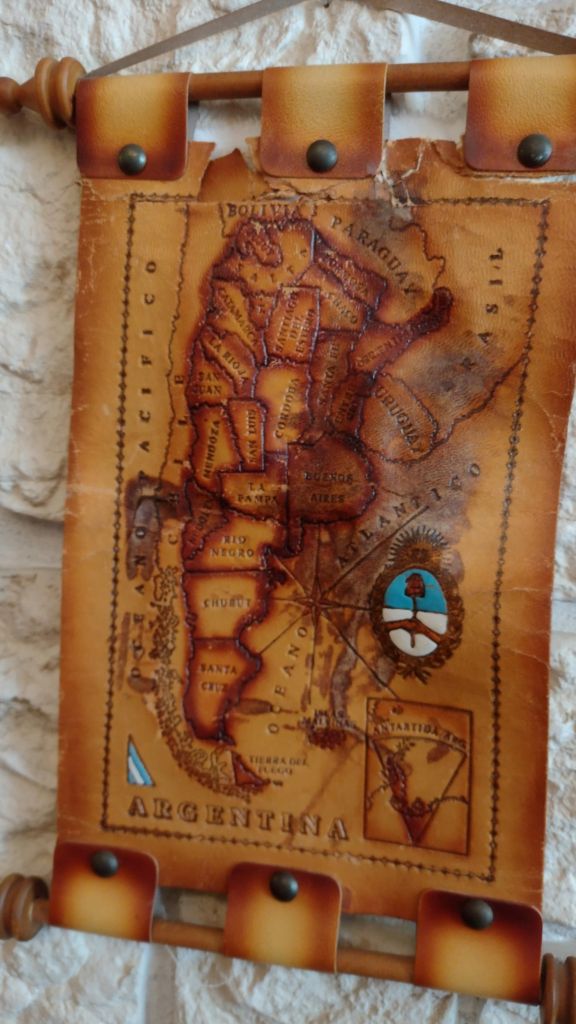
Jachym Cepicky spotted this leatgher map of Argentina in Cafe Dlask in Varnsdorf
MapsintheWild Argentina on Cow Hide
-
sur Sean Gillies: Black Squirrel volunteering
Publié: 7 September 2024, 1:18am CEST
Black Squirrel is the local trail half-marathon that I've finished five times since 2016. I registered to run it again this year, but had to scratch because of my Achilles tendonitis.
Instead, I'm going to volunteer at the event. I'll be among the first at Lory State Park, helping arriving runners park their cars and find the starting line. After that, I'm going to a trail intersection to keep first-time runners on course as they pour down the Howard Trail. It's going to be a beautiful late summer morning and I'm looking forward to being part of the event.
-
sur GeoSolutions: FREE Webinar: MapStore Major Release 2024.01 and Beyond
Publié: 6 September 2024, 2:46pm CEST
You must be logged into the site to view this content.
-
sur Mappery: River Thames coffee table
Publié: 6 September 2024, 2:00pm CEST

This rather fine coffee table, which used to belong to my father, depicts the River Thames all the way from source to mouth. The river has been carved into the table and then painted silver, with both ends then wrapping around the side of the table. I’m not sure who the original crafts-person was but its quite fun!
Happy birthday Mappery!
MapsintheWild River Thames coffee table
-
sur Mappery: Beer for our Birthday, Mr Wainwright?
Publié: 6 September 2024, 12:00pm CEST
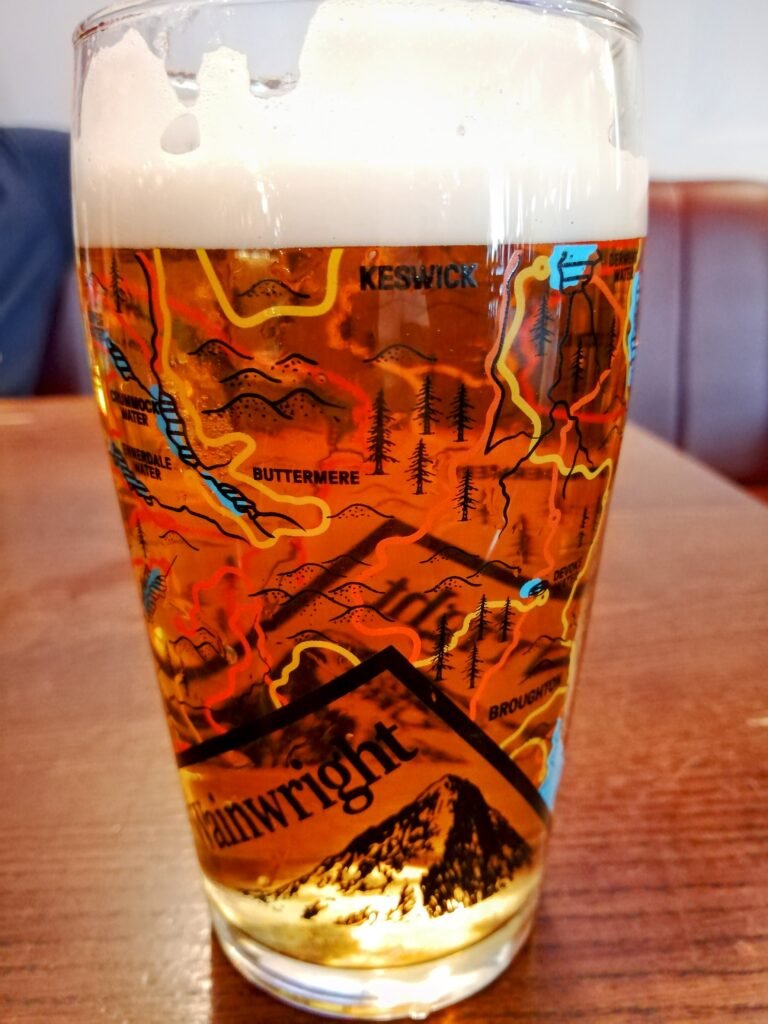
Regulars will know that we get a lot of maps in the wild which feature, wine, spirits or beer. I couldn’t resist this Wainwright beer glass (suitably filled) for the last of my birthday sequence.
Nick Hill sent this pic.
“Not sure if you’ve had this one before? I saw this map of the Lake District on my glass while enjoying a pint of Wainwright Gold in the Queen of Hearts pub in Daventry.
Cheers, Nick”
Well cheers to you Nick and to all of our MapsintheWild community, drink a toast to all of our contributors today if you can.MapsintheWild Beer for our Birthday, Mr Wainwright?
-
sur Mappery: Mappy Birthday!
Publié: 6 September 2024, 11:00am CEST
Happy Birthday to the incredible @mapsinthewild! ? Mappery has been a constant source of inspiration for my wanderlust adventures. I’m sharing a photo of a motorbike I spotted in Toulouse, France to celebrate this special day. The licence plate from Germany stands for a long journey. The vibrant city always brings back fond memories of my years there as a student: a nice combo to share.
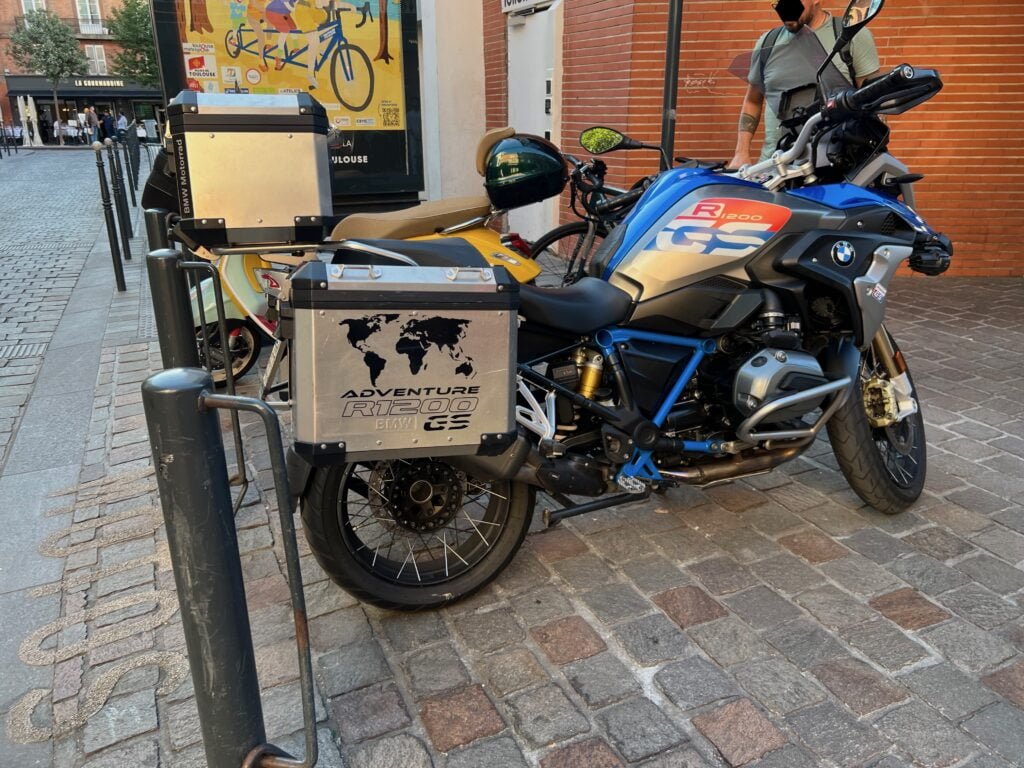
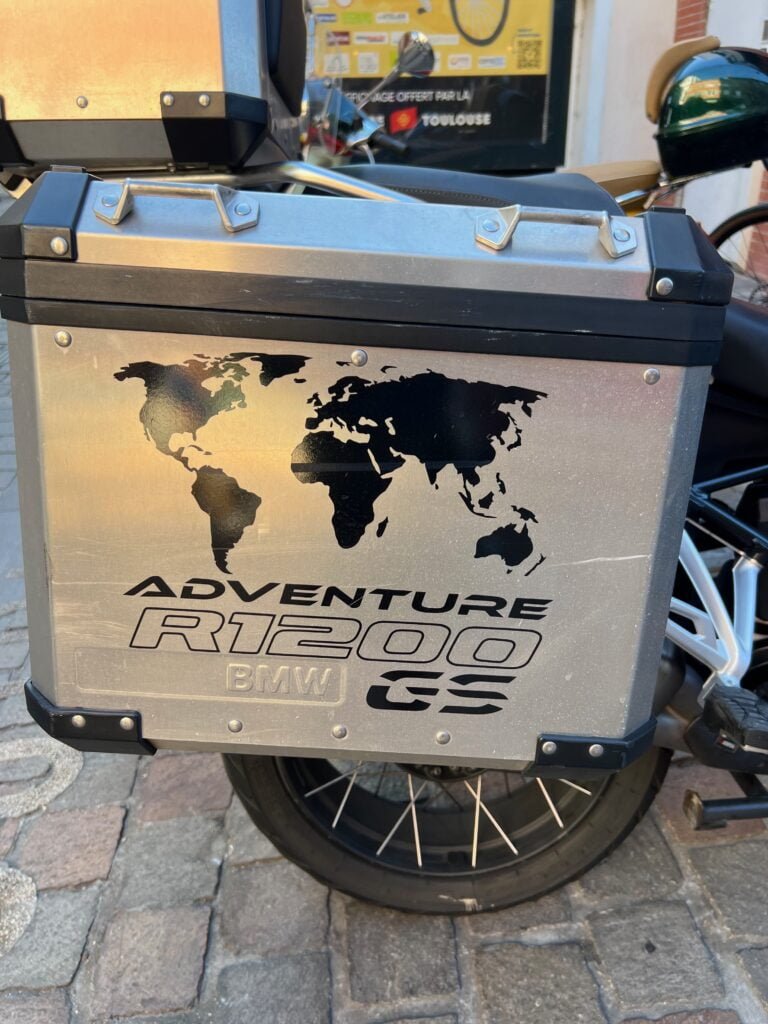
MapsintheWild Mappy Birthday!
-
sur Mappery: Mappy Birthday! – Meridian 17
Publié: 6 September 2024, 10:00am CEST
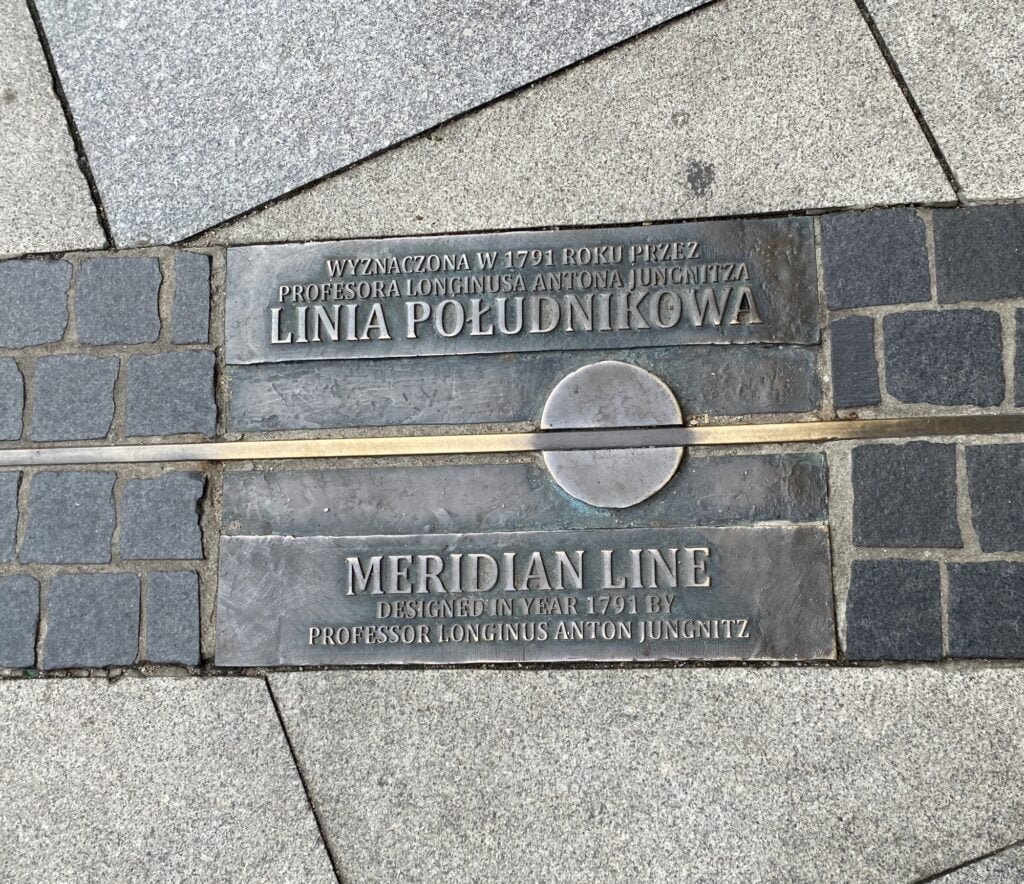
Today is Mappery’s 6th birthday.
Remarkable really that we have kept this up for 6 years, that’s just over 1600 posts with almost 2,500 images, 300 weekly email newsletters, thousands of social media follows (no longer X’ing) and a lot of support from our readers and contributors who have made #MapsintheWild into a community.
So thanks to Ken who helped me to start Mappery when we were on safari together, thanks to Arnaud and Dan who help to share the load and keep the site running and thanks to everyone who has contributed a MapintheWild.
Today’s birthday post is the 17th Meridian line. Why? Well unsurprisingly, for regular readers/followers, this pic came from Reinder Storm, in our six years Reinder has contributed over 180 of the posts that we have featured which is pretty remarkable. I know this isn’t an actual map but it testifies to the map geekiness and passion of our contributors and followers -THANK YOU REINDER
Reinder commented “… passes right through Wroc?aw, Poland. The meridian 17° east of Greenwich is a line of longitude that extends from the North Pole across the Arctic Ocean, Europe, Africa, the Atlantic Ocean, the Southern Ocean, and Antarctica to the South Pole”
We’ll be pushing the boat out with a few more birthday posts today.
MapsintheWild Mappy Birthday! – Meridian 17
-
sur 2024 Fall Foliage Map
Publié: 6 September 2024, 8:55am CEST par Keir Clarke
Autumn is nearly upon us. Although the Autumn Equinox is not until the 22rd September the 2024 Smoky Mountain Fall Foliage Map shows that the most northern counties of the United States will already have begun to notice the colors of the leaves changing.Every year Smoky Mountain releases an interactive Fall Foliage Map, which plots the annual progress of when and where leaves change their colors
-
sur Mappery: The City of New York has fallen over
Publié: 6 September 2024, 1:00am CEST
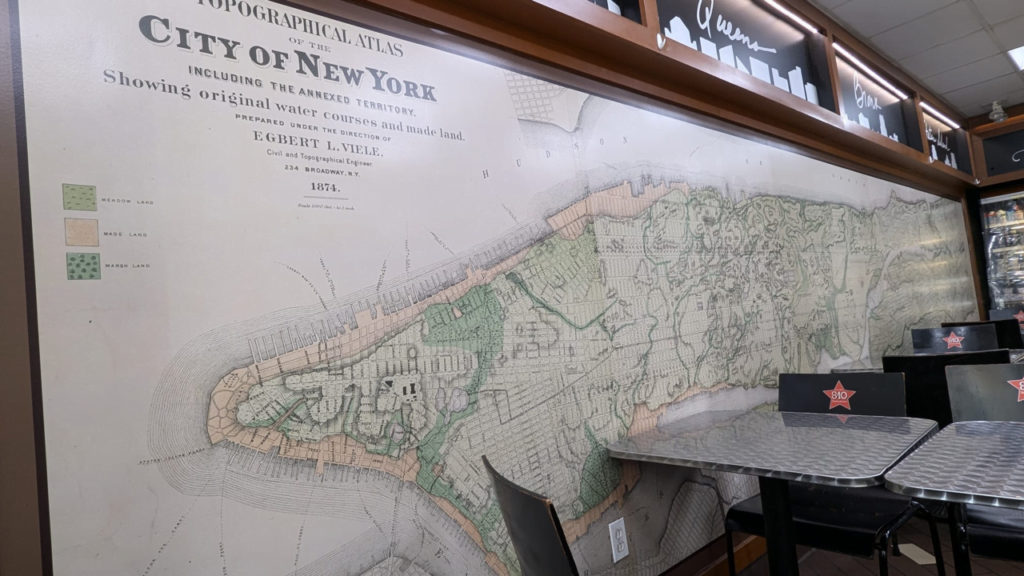
A bonus pic from Ken for our birthday.
Ken was in New York recently and he sent this map in the wild from a diner that he stopped at. To fit the map into the available space they rotated it to west up.
MapsintheWild The City of New York has fallen over
-
sur Fernando Quadro: Geotecnologia aplicada na Silvicultura
Publié: 5 September 2024, 2:00pm CEST
As conhecidas geotecnologias extrapolam os limites de sua ciência de desenvolvimento e aplicação. Dentre os vários setores produtivos nos quais ela é utilizada, a silvicultura é uma atividade que aproveita ao máximo o universo de soluções para diversos setores da gestão florestal. Tudo o que ela tem para oferecer pode ser aproveitado em benefício da gestão florestal. A geotecnologia se apresenta como uma ferramenta poderosa, oferecendo novas maneiras de se coletar dados, monitorar ecossistemas florestais e tomar decisões informadas. Atualmente é impossível imaginar que a gestão de uma floresta plantada possa ser realizada sem o uso desta potente ferramenta.
O drone, por exemplo, como ferramenta é um grande marco na geotecnologia. A possibilidade de municiar cada equipe de campo com um drone com uma câmera fotográfica embarcada elevou o nível da geotecnologia aplicada na silvicultura a um patamar nunca vivenciado. Claro que este avanço teve que superar questões como a dificuldade no processamento de tantas imagens capturadas, na identificação de indivíduos e na separação entre espécies através de técnicas de sensoriamento remoto. Dificuldades essas que se ampliaram com o surgimento de sensores LiDAR embarcados, que detalha o espaço com precisão milimétrica, sendo certo que a resolução dessas demandas abriu muitas possibilidades para o manejo silvicultural, especialmente para o inventário florestal.
Atualmente o estado da arte da geotecnologia aplicada na silvicultura está representada nos seguintes usos:
 Big Data Geoespacial: A explosão de dados geoespaciais gerados por uma variedade de fontes, incluindo sensores remotos, dispositivos móveis e estações de monitoramento, está impulsionando o desenvolvimento de técnicas de análise de big data geoespacial. Isso inclui algoritmos de machine learning e inteligência artificial para análise de padrões espaciais, previsão e tomada de decisões.
Big Data Geoespacial: A explosão de dados geoespaciais gerados por uma variedade de fontes, incluindo sensores remotos, dispositivos móveis e estações de monitoramento, está impulsionando o desenvolvimento de técnicas de análise de big data geoespacial. Isso inclui algoritmos de machine learning e inteligência artificial para análise de padrões espaciais, previsão e tomada de decisões. Internet das Coisas (IoT) Geoespacial: A integração de sensores geoespaciais em equipamentos de monitoramento cria um ambiente de IoT geoespacial. Isso permite a coleta contínua de dados em tempo real sobre o ambiente e árvores individuais aumentando a compreensão das interações floresta-ambiente.
Internet das Coisas (IoT) Geoespacial: A integração de sensores geoespaciais em equipamentos de monitoramento cria um ambiente de IoT geoespacial. Isso permite a coleta contínua de dados em tempo real sobre o ambiente e árvores individuais aumentando a compreensão das interações floresta-ambiente. Geotecnologia para Inteligência Artificial: A geotecnologia está sendo integrada a algoritmos de inteligência artificial para uma variedade de aplicações, incluindo detecção de mudanças no uso da terra, identificação de espécies individuais e doenças a partir de imagens aéreas, previsão de eventos climáticos extremos, otimização de recursos operacionais, entre outras.
Geotecnologia para Inteligência Artificial: A geotecnologia está sendo integrada a algoritmos de inteligência artificial para uma variedade de aplicações, incluindo detecção de mudanças no uso da terra, identificação de espécies individuais e doenças a partir de imagens aéreas, previsão de eventos climáticos extremos, otimização de recursos operacionais, entre outras.Não há dúvidas que a geotecnologia tem enorme participação no aumento da produtividade florestal experimentada nos dias de hoje, seja na melhoria do manejo, na conservação hídrica e do solo, seja no aproveitamento de regiões antes consideradas inaptas para a silvicultura.
Fonte: webgis.tech
Instagram: [https:]]
LinkedIn: [https:]] -
sur Mappery: Global Delivery Bike (except New Zealand)
Publié: 5 September 2024, 11:00am CEST

Erik spotted this delivery bike in Delft. It looks as if half of New Zealand is missing.

MapsintheWild Global Delivery Bike (except New Zealand)
-
sur The Book Banning Map of America
Publié: 5 September 2024, 9:16am CEST par Keir Clarke
The American Library Association (ALA) reports that attempts to ban books "surged 65% in 2023 compared to 2022 numbers, reaching the highest level ever documented by ALA." Nearly half of the books targeted for banning were related to issues of LGBTQ+ communities or race.Now the ALA has partnered with Little Free Library and PEN America to release an interactive map which shows
-
sur PostGIS Development: PostGIS 3.3.7
Publié: 5 September 2024, 2:00am CEST
The PostGIS Team is pleased to release PostGIS 3.4.7! This is a bug fix release.
3.3.7- source download md5
- NEWS
- PDF docs: en
-
sur W3C Maps for HTML Community Group: MapML.js release v0.14.0: CSS and Pmtiles
Publié: 4 September 2024, 11:38pm CEST
Scripting, Styling and Web Maps: Who’s On First? The Big ThreePart of the job of being a Web standard means that you have to follow the architecture of the web, which allocates specific jobs across the Big Three languages: HTML, CSS and JavaScript. For JavaScript, this ideally means supplying and enhancing site-specific semantics and user experience, and leaving accessibility and rendering up to the browser’s HTML infrastructure; for Cascading Style Sheets, it means supporting the HTML rendering engine through accessibility-enhancing styling instructions declared by the page according to the CSS language. For HTML, it means parsing the page and rendering HTML elements as accessible content, and providing a DOM API to allow access to the content by JavaScript manipulation to provide and enhance effective user experiences.

In the Maps for HTML universe, our goal is an update to Web standards that sees maps and location decomposed with accessibility as a precondition, into rendering, style and behaviour, and fit into the appropriate architectural domain, be that in HTML, CSS or JavaScript. There is no support today for maps or location in any of the Big Three languages. The consequence of this lack of platform support for web maps is their exclusive and massive allocation to the JavaScript domain. The societal implications of this misallocation are a subject for another post.
To date, we have articulated a mechanism to embed accessible and semantic web maps and locations into an HTML viewer widget, the <mapml-viewer> element. So far, the fit of this widget to the HTML media widget paradigm seems appropriate. For a refresher on how the viewer works, check out our Quick Start video.
The question that bears additional scrutiny and community involvement, and that which is the question of this post is: How can we better leverage CSS for styles of maps and location, while enhancing accessibility? Opaque (binary) media types HTML media like video and audio don’t have much relationship with CSS, whereas map rendering has a natural connection to text and graphics styling. It’s the natural connection of maps to web architecture that makes maps and location a good candidate for a web standard.
What You Can Do With CSS in MapML Today – Support by GeoServerThe main use of CSS in MapML is to style the tree of elements rooted at the <map-feature>. The <map-feature> element is a custom element that can be obtained in a fetched MapML-format XHTML document, or found inline in HTML proper, between the <layer-> … </layer-> layer tags. <map-feature> elements are parsed and their <map-geometry> elements rendered as a shadow-DOM embedded SVG <g> tag (group element), with different geometry values rendered within that group as <path>s within the parent <g>. Any class attributes on the <map-feature> are copied to the root <path> element, and class attributes on descendent geometry elements are copied to the <path> that they are rendered as. This allows us to apply CSS rules to <map-feature> as though its parts were actual SVG tags, so long as the rendered feature parts can be selected via their class, which is copied from the source <map-whatever> element. This can even be useful for making accessible interactive maps.
This technique is used by GeoServer for example, which transforms Style Layer Descriptor server styles into CSS stylesheets with selectors for generated class values from the server layers’ contents. In addition to allowing basic styling of points, lines and polygons, this facility enables GeoServer to dynamically generate and style MapML-encoded vector tiles. The perceived performance of tiled vector maps can be acceptable, especially when such tiles are created and cached for later access, and improvements can be expected with additional specification and software development effort. This is all pretty interesting because it is starting to show us a path to (better) integration between the native web platform languages like HTML and CSS on the one hand, and maps on the other.
Mapbox Vector Tiles and the pmtiles Archive Format“pmtiles” is the name of a modern, cloud-friendly map tile archive format that is gaining popularity among web mapping applications, because it allows websites to readily serve their own map vector tile data without necessarily hosting the whole world, which is cost- and time-prohibitive. The motivation behind pmtiles (a product of the Protomaps project) would seem to be compatible with our community’s goal of standardising maps for the web. In the words of its creator Brandon Liu, :
Maps are everywhere on the Internet. Think of any popular retail site, travel search or local government portal. The infrastructure of the web, from languages like JavaScript, front-end frameworks, and databases, is overwhelmingly free software. Maps are one of the few remaining choke points* of an otherwise open web.
* choke points aka control points
pmtiles efficiently manages potentially massive amounts of tiled vector data in a single archive file. The archive can be hosted in a variety of server environments, but the main criteria for success is that the host server is capable of http range requests. When a client needs a particular tile, it makes the request not using the zoom, row and column coordinates as URL parameters or path steps, but by transforming the tile’s coordinates to a pmtiles archive byte range, using the tile’s byte offset and length, calculated from the archive’s metadata which contains, among other information, the formula to perform the transformation.
Under the hood, a .pmtiles archive file is a clever application of Hilbert space filling curves to efficiently compress tiles in the Web Mercator projection, encoded in the Mapbox Vector Tiles or other format (mvt). Mvt is a kind of de facto standard among vector tile formats, of which there are many, too numerous to mention. The protomaps-leaflet library integrates support for both .pmtiles archives as well as raw .mvt tile responses served through a web server API, following the {z}/{x}/{y} URL (template) convention. Protomaps-leaflet styling of tiles is accomplished via “themes”, or “rules”. Rules encode canvas 2D API call parameters on a per-tile, per-layer basis, such that map feature styles are encoded as JavaScript objects and methods that are called back by the protomaps-leaflet tile rendering engine. A theme is a named collection of rules, e.g. “light” or “dark”.
The newly-renamed MapML.js release 0.14.0 supports pmtiles archives and .mvt format API services, including custom map styling, via a protomaps-leaflet integration, mainly through the templated <map-link> element. Projection support is currently limited to OSMTILE maps, because of the (hopefully short-term) restriction of protomaps-leaflet to the Web Mercator projection and powers of 2 tile pyramids. Custom styles can be created and included as a “stylesheet” module by means of an exported symbol named “pmtilesStyles”, containing a defined and required JavaScript object structure.
If you’re using GeoServer, or pmtiles / mvt support in MapML.js, or any open source component from our community in your maps, please get in touch, we’d love to hear from you about your experience.
Call For CommunityA large measure of the payoff for the effort of building maps into HTML will be simple and decentralised access (i.e. no “choke points”) to the incredible rendering performance afforded by native code styling through CSS. What wouldn’t be possible in such a world? Accessible location navigation, animations, moving features, real time location updates, oh my! Worth mentioning: the CSS development community often sets an example of dynamic, open collaboration definitely worthy of emulating, if not wholly joining forces with.
In summary, let’s take the “special” out of spatial, and collectively imagine, design and implement a HTML+CSS engine capable of fully expressing and executing cartographic rules, for the future.
-
sur OGC Membership approves Common Query Language (CQL2) as an official OGC Standard
Publié: 4 September 2024, 3:00pm CEST par Simon Chester
The Open Geospatial Consortium (OGC) is excited to announce that the OGC Membership has approved Version 1.0 of the Common Query Language (CQL2) for adoption as an official OGC Standard.
Filtering is a fundamental operation performed on feature data to obtain a subset that contains the geospatial information a user needs. CQL2 is a filter grammar that can be used to specify how features can be filtered to obtain a subset. The Standard supports both text and JSON encodings so can be easily integrated into a variety of software applications.
CQL2 is a revision of the original Common Query Language. While the language design is consistent with the original version, many changes and additions to improve consistency and capabilities have been made. Existing implementations of CQL will need to be updated to process filter expressions specified by CQL2.
The OGC API – Features Standard currently uses CQL2, and other Standards that require the ability to filter data are likely to adopt it as well. Example files and JSON, YAML, and BNF schemas have been published on the OGC schemas repository to enable software developers to rapidly implement CQL2.
The original Common Query Language (CQL) was created as a text encoding for use in the OGC Catalogue Service Implementation Specification. CQL is based on the capabilities in the OGC Filter Encoding (FE) Standard, which was originally part of the Web Feature Service (WFS) Standard.
CQL2 is the outcome of the work and dedication of the OGC API – Features Standards Working Group, which led the development of the Standard, including:
- Editors:
- Panagiotis (Peter) A. Vretanos, CubeWerx Inc.
- Clemens Portele, interactive instruments GmbH
- Submitters:
- Andrea Aime, GeoSolutions di Giannecchini Simone & C. s.a.s.
- Jeff Harrison, US Army Geospatial Center (AGC)
- Jérôme Jacovella-St-Louis, Ecere Corporation
As with any OGC Standard, CQL2 is free to download and implement. Interested parties can learn more on the OGC CQL2 Standard webpage.
The post OGC Membership approves Common Query Language (CQL2) as an official OGC Standard appeared first on Open Geospatial Consortium.
- Editors:
-
sur Fernando Quadro: Porque usar o Geography no PostGIS?
Publié: 4 September 2024, 2:00pm CEST
Você sabia que ao trabalhar com grandes volumes de dados no PostGIS pode te levar a medições imprecisas?
É verdade. Quando você armazena seus dados geoespaciais como Geometry, o PostGIS trata esses dados como um plano 2D, como se a Terra fosse uma “panqueca”.
Mas não se preocupe, existe solução para isso. Você pode armazenar seus dados com o tipo Geography no PostGIS ao invés de Geometry.
Isso irá dizer ao PostGIS para usar um sistema de coordenadas “arredondas”, proporcionando medições muito mais precisas.
Nesses casos o tipo Geography é a melhor opção, e traz como benefícios:
 Dados armazenados em WGS84 (latitude/longitude) com medidas em metros
Dados armazenados em WGS84 (latitude/longitude) com medidas em metros
 Funções nativas especiais feitas apenas para este tipo de dados
Funções nativas especiais feitas apenas para este tipo de dados
 Perfeito para lidar com grandes regiões
Perfeito para lidar com grandes regiõesSe você tem já sua base de dados armazenada em Geometry, não se preocupe, você pode transformar seus dados em tempo de execução para Geography e obter resultados mais precisos em suas medições.
Fonte: webgis.tech
Instagram: [https:]]
LinkedIn: [https:]] -
sur WhereGroup: Plugins – praktische Helfer in QGIS
Publié: 4 September 2024, 11:07am CEST
Dieses Mal stellen wir Ihnen eine Auswahl von fünf nützlichen Plugins aus den über 2.000 Plugins für QGIS, die Ihnen bei Ihrer täglichen Arbeit weiterhelfen. -
sur Mappery: Surficial geology of Maine
Publié: 4 September 2024, 11:00am CEST

Doug shared this – Surficial geology of Maine #MapsintheWild @ Watershed Art Center Newcastle, Maine
If like me you thought Surficial Geology was a typo, read and learn
MapsintheWild Surficial geology of Maine
-
sur Write Your Name in Landsat
Publié: 4 September 2024, 8:20am CEST par Keir Clarke
the word 'love' in Landsat images Soon after the emergence of Google Maps, a short while after getting bored zooming in on their house in satellite view, some people began searching for satellite images of Earth forms and patterns which resembled letters of the alphabet - when viewed from above.The first pareidolia sufferer that I can remember becoming hooked on discovering typefaces in nature
-
sur PostGIS Development: PostGIS 3.4.3
Publié: 4 September 2024, 2:00am CEST
-
sur Oslandia: (Fr) Variabilisez vos profils QGIS avec QDT
Publié: 3 September 2024, 6:42pm CEST
Sorry, this entry is only available in French.
-
sur Fernando Quadro: Inteligência Artificial, GIS e Smart Cities
Publié: 3 September 2024, 2:00pm CEST
As cidades inteligentes representam o futuro da vida urbana, integrando tecnologia e soluções baseadas em dados para aumentar a eficiência, a sustentabilidade e a qualidade de vida dos residentes. No centro do desenvolvimento das cidades inteligentes está o papel da inteligência artificial (IA) nos Sistemas de Informação Geográfica (GIS), revolucionando a forma como as cidades planejam, otimizam e gerem infraestruturas críticas, como redes de transporte, serviços públicos e serviços públicos.
Nesta postagem falaremos um pouco sobre o papel multifacetado da IA ??no GIS para o planejamento de infraestrutura de cidades inteligentes, com foco em suas implicações e benefícios para o desenvolvimento urbano.
O planeamento de infraestruturas de cidades inteligentes abrange uma vasta gama de elementos, desde sistemas de transporte inteligentes e serviços públicos energeticamente eficientes até serviços públicos responsivos e desenvolvimento urbano sustentável. O GIS alimentado por IA desempenha um papel fundamental neste processo, aproveitando dados espaciais, análises preditivas e monitoramento em tempo real para otimizar o projeto, operação e manutenção de infraestrutura para cidades inteligentes e resilientes.
 Aplicações de IA no planejamento de infraestrutura de cidades inteligentes:
Aplicações de IA no planejamento de infraestrutura de cidades inteligentes: Otimização de Transporte
Otimização de Transporte
 Gestão de Utilidades e Eficiência Energética
Gestão de Utilidades e Eficiência Energética
 Prestação de serviço público
Prestação de serviço público
 Monitoramento Ambiental e Sustentabilidade
Monitoramento Ambiental e Sustentabilidade Benefícios da IA ??no planejamento de infraestrutura de cidades inteligentes:
Benefícios da IA ??no planejamento de infraestrutura de cidades inteligentes: Maior eficiência e otimização de recursos
Maior eficiência e otimização de recursos
 Tomada de decisão baseada em dados
Tomada de decisão baseada em dados
 Melhor experiência do cidadão e qualidade de vida
Melhor experiência do cidadão e qualidade de vida
 Desenvolvimento Sustentável e Resiliência
Desenvolvimento Sustentável e ResiliênciaEmbora a IA traga benefícios significativos para o planeamento de infraestruturas de cidades inteligentes, desafios como a privacidade de dados, a segurança cibernética, a parcialidade dos algoritmos, a conformidade regulamentar e a equidade digital precisam de ser abordados. Isto requer quadros de governação robustos, envolvimento das partes interessadas, práticas éticas de IA e estratégias de planeamento urbano inclusivas para o desenvolvimento equitativo e sustentável de cidades inteligentes.
Concluindo, o SIG alimentado por IA está a transformar o cenário do planeamento de infraestruturas de cidades inteligentes, oferecendo oportunidades sem precedentes de eficiência, sustentabilidade e inovação no desenvolvimento urbano. Ao aproveitar as capacidades da IA, as cidades podem otimizar a infraestrutura, melhorar a prestação de serviços e criar ambientes urbanos mais habitáveis ??e resilientes para as gerações vindouras. Adotar a IA no planejamento de cidades inteligentes não se trata apenas de avanço tecnológico – trata-se de construir cidades mais inteligentes, mais conectadas e sustentáveis ??que beneficiem a todos.
Fonte: webgis.tech
Instagram: [https:]]
LinkedIn: [https:]]
-
sur Mapping Moving Borders in Real-Time
Publié: 3 September 2024, 11:56am CEST par Keir Clarke
The international border between Italy and Switzerland & Austria in the Alps largely follows the path of the watershed line. Unfortunately due to global heating and shrinking glaciers the Alpine watershed line keeps on moving. The result is that the border between Italy and its Alpine neighbors is also constantly moving.In 2016 the Italian Limes project attempted to track the movement of the
-
sur Mappery: Pijnacker-Nootdorp
Publié: 3 September 2024, 11:00am CEST

Eric said “Today I visited the municipality of Pijnacker-Nootdorp. There’s a beautiful #mapsinthewild carpet in the Council Chamber (with even half of Delft on it)”

MapsintheWild Pijnacker-Nootdorp
-
sur Sean Gillies: August 22, 2018: Paris in a Day
Publié: 3 September 2024, 1:16am CEST
Six years ago my family and I spent some time in France, passing through Lyon and Paris on the way back to Colorado. While Ruth stayed behind at a conference in Montpellier, Arabelle, Bea, and I did Paris in a day. We saw many bones, ate much gelato, hiked many stairs, rode many trains and buses, and enjoyed being together, seeing new places, and using our second language in one of the world's capitals. I cherish my memories of this day. I felt like I was killing the fun Francophile dad role and thoroughly enjoyed the company of my kids. I had a memorable time. We confirmed in June that Arabelle and Bea have strong, positive memories, as well.
I went to Instagram for the first time in years to dig up a photo taken on that day that I haven't published on my blog before.

A child in a blue top making a peace sign in front of the Eiffel Tower and waxing moon.
We didn't go back to the Trocadero in June, assuming that it was closed for Olympics construction, but we did go back to Montmartre and Sacre Coeur. Both Arabelle and Bea have been cultivating Spanish as a third language since 2018 and had a chance to use it on our recent visit. We encountered a Spanish kid of Bea's age who had been separated from her parents and kept her company until we could reach her mom on the phone. She had no phone of her own, but had memorized key numbers.
-
sur Fernando Quadro: PostGIS e a Inteligência Artificial
Publié: 2 September 2024, 10:13pm CEST
No atual cenário empresarial acelerado, aproveitar os dados de localização pode proporcionar uma vantagem competitiva significativa. Desde a otimização da logística e das rotas de entrega até à melhoria das experiências dos clientes através de serviços baseados em localização, a capacidade de extrair informações valiosas de dados geográficos é fundamental.
Como você já deve saber o PostGIS é uma extensão de código aberto amplamente utilizada que adiciona suporte para objetos geográficos, permitindo que consultas SQL espaciais sejam executadas dentro do sistema de gerenciamento de banco de dados PostgreSQL. O Postgres-AI, por outro lado, é uma extensão introduzida recentemente que traz recursos de aprendizado de máquina (ML) diretamente para o PostgreSQL, permitindo treinamento e inferência de modelos no banco de dados.
A integração do PostGIS e do Postgres-AI abre inúmeras possibilidades para inteligência de localização e análise de dados espaciais, incluindo:
 Seleção de sites de varejo e análise de mercado
Seleção de sites de varejo e análise de mercado
 Logística e otimização da cadeia de suprimentos
Logística e otimização da cadeia de suprimentos
 Modelagem preditiva para serviços baseados em localização
Modelagem preditiva para serviços baseados em localização
 Planejamento urbano e desenvolvimento de infraestrutura
Planejamento urbano e desenvolvimento de infraestrutura
 Monitoramento ambiental e esforços de conservação
Monitoramento ambiental e esforços de conservação
 Marketing direcionado e segmentação de clientes
Marketing direcionado e segmentação de clientesAo aproveitar essas ferramentas poderosas, as organizações podem tomar decisões baseadas em dados, otimizar operações e aprimorar sua compreensão de padrões e relacionamentos geográficos, ao mesmo tempo em que aproveitam o poder do aprendizado de máquina.
Fonte: webgis.tech
Instagram: [https:]]
LinkedIn: [https:]] -
sur Mappery: Around the Globe
Publié: 2 September 2024, 11:00am CEST

From Reinder “… the title means something like ‘Around the globe’. Needs no further explanation I presume” – nope!
MapsintheWild Around the Globe
-
sur Land doesn't vote, people do!
Publié: 2 September 2024, 10:05am CEST par Keir Clarke
Engaging Data has updated its US County Electoral Map – Land Area vs Population map so that you can now zoom in and explore the election results in each state. The map allows you to see the 2020 Presidential Election election results at the county level based on land area or population size.If you select the 'Population' button on the map then the colored proportional circles change size to
-
sur TorchGeo: v0.6.0
Publié: 1 September 2024, 12:12pm CEST
TorchGeo 0.6.0 Release NotesTorchGeo 0.6 adds 18 new datasets, 15 new datamodules, and 27 new pre-trained models, encompassing 11 months of hard work by 23 contributors from around the world.
Highlights of this release Multimodal foundation modelsThere are thousands of Earth observation satellites orbiting the Earth at any given time. Historically, in order to use one of these satellites in a deep learning pipeline, you would first need to collect millions of manually-labeled images from this sensor in order to train a model. Self-supervised learning enabled label-free pre-training, but still required millions of diverse sensor-specific images, making it difficult to use newly launched or expensive commercial satellites.
TorchGeo 0.6 adds multiple new multimodal foundation models capable of being used with imagery from any satellite/sensor, even ones the model was not explicitly trained on. While GASSL and Scale-MAE only support RGB images, DOFA supports RGB, SAR, MSI, and HSI with any number of spectral bands. It uses a novel wavelength-based encoder to map the spectral wavelength of each band to a known range of wavelengths seen during training.
The following table describes the dynamic spatial (resolution), temporal (time span), and/or spectral (wavelength) support, either via their training data (implicit) or via their model architecture (explicit), offered by each of these models:
Model Spatial Temporal Spectral DOFA implicit - explicit GASSL implicit - - Scale-MAE explicit - - TorchGeo 0.6 also adds multiple new unimodal foundation models, including DeCUR and SatlasPretrain.
Source Cooperative migrationTorchGeo contains a number of datasets from the recently defunct Radiant MLHub:
- AgriFieldNet Competition Dataset
- Smallholder Cashew Plantations in Benin
- Sentinel-2 Cloud Cover Segmentation Dataset
- CV4A Kenya Crop Type Competition
- Tropical Cyclone Wind Estimation Competition
- Marine Debris Dataset for Object Detection in Planetscope Imagery
- Rwanda Field Boundary Competition Dataset
- South Africa Crop Type Competition
- SpaceNet Datasets
- Western USA Live Fuel Moisture
These datasets were recently migrated to Source Cooperative (and AWS in the case of SpaceNet), but with a completely different file format and directory structure. It took a lot of effort, but we have finally ported all of these datasets to the new download location and file hierarchy. As an added bonus, the new data loader code is significantly simpler, allowing us to remove 2.5K lines of code in the process!
OSGeo community projectTorchGeo is now officially a member of the OSGeo community! OSGeo is a not-for-profit foundation for open source geospatial software, providing financial, organizational, and legal support. We are in good company, with other OSGeo projects including GDAL, PROJ, GEOS, QGIS, and PostGIS. Membership in OSGeo promotes advertising of TorchGeo to the community, and also ensures that we follow best practices for the stability, health, and interoperability of the open source geospatial ecosystem.
All TorchGeo users are encouraged to join us on Slack, join our Hugging Face organization, and join us in OSGeo using any of the following badges in our README:
Lightning Studios supportTorchGeo has always had a close collaboration with Lightning AI, including active contributions to PyTorch Lightning and TorchMetrics. In this release, we added buttons allowing users to launch our tutorial notebooks in the new Lightning Studios platform. Lightning Studios is a more powerful version of Google Colab, with reproducible software and data environments allowing you to pick up where you left off, VS Code and terminal support, and the ability to quickly scale up to a large number of GPUs. All TorchGeo tutorials have been confirmed to work in both Lightning Studios and Google Colab, allowing users to get started with TorchGeo without having to invest in their own hardware.
Backwards-incompatible changes- All Radiant MLHub datasets have been ported to the Source Cooperative file hierarchy (#1830)
- GeoDataset: the bbox sample key was renamed to bounds in order to support Kornia (#2199)
- Chesapeake7 and Chesapeake13: datasets were removed when updating to the 2022 edition (#2214)
- Benin Cashews and Rwanda Field Boundary: remove
os.path.expanduserfor consistency (#1705) - LEVIR-CD and OSCD:
imageskey was split intoimage1andimage2for change detection (#1684, #1696) - EuroSAT:
B08Awas renamed toB8Ato match Sentinel-2 (#1646)
- aws-cli: to download datasets from AWS (#2203)
- azcopy: to download datasets from Azure (#2064)
- prettier: for YAML file formatting (#2018)
- ruff: for code style and documentation testing (#1994)
- radiant-mlhub: website no longer exists (#1830)
- rarfile: datasets rehosted as zip files (#2210)
- zipfile-deflate: no longer needed for newer Chesapeake data (#2214)
- black: replaced by ruff (#1994)
- flake8: replaced by ruff (#1994)
- isort: replaced by ruff (#1994)
- pydocstyle: replaced by ruff (#1994)
- pyupgrade: replaced by ruff (#1994)
- python: 3.10+ required following SPEC 0 (#1966)
- fiona: 1.8.21+ required (#1966)
- kornia: 0.7.3+ required (#1979, #2144)
- lightly: 1.4.5+ required (#2196)
- lightning: 2.3 not supported due to bug (#2155, #2211)
- matplotlib: 3.5+ required (#1966)
- numpy: 1.21.2+ required (#1966), numpy 2 support added (#2151)
- pandas: 1.3.3+ required (#1966)
- pillow: 3.3+ required (#1966), jpeg2000 support required (#2209)
- pyproj: 3.3+ required (#1966)
- rasterio: 1.3+ required (#1966)
- shapely: 1.8+ required (#1966)
- torch: 1.13+ required (#1358)
- torchvision: 0.14+ required (#1358)
- h5py: 3.6+ required (#1966)
- opencv: 4.5.4+ required (#1966)
- pycocotools: 2.0.7+ required (#1966)
- scikit-image: 0.19+ required (#1966)
- scipy: 1.7.2+ required (#1966)
- AgriFieldNet (#1873)
- CaBuAr (#2235)
- ChaBuD (#1259)
- Digital Typhoon (#1748)
- EuroSAT Spatial (#2074)
- GeoNRW (#2209)
- I/O Bench (#1972)
- LEVIR-CD (#1770)
- LEVIR-CD+ (#1707)
- QuakeSet (#1997)
- Sentinel-2 + CDL (#1889)
- Sentinel-2 + EuroCrops (#1869)
- Sentinel-2 + NCCM (#1950)
- Sentinel-2 + South America Soybean (#1959)
- South Africa Crop Type (#1970)
- VHR-10 (#1082)
- Remove torchgeo.datamodules.utils.dataset_split (#2005)
- EuroSAT: make sure normalization is actually applied (#2176)
- Fix plotting in datamodules when dataset is a subset (#2003)
- AgriFieldNet (#1459)
- Airphen (#1803)
- CaBuAr (#2235)
- ChaBuD (#1259)
- CropHarvest (#1677)
- Digital Typhoon (#1748)
- EuroCrops (#1813)
- EuroSAT Spatial (#2074)
- GeoNRW (#2209)
- I/O Bench (#1972)
- LEVIR-CD (#1770)
- Northeast China Crop Map (#1666)
- PRISMA (#1743)
- QuakeSet (#1997)
- SkyScript (#2253)
- South Africa Crop Type (#1840)
- South America Soybean (#1668)
- SpaceNet 8 (#2203)
- Benin Cashews: migrate to Source Cooperative (#2116)
- Benin Cashews: remove
os.path.expanduserfor consistency (#1705) - BigEarthNet: fix broken download link (#2174)
- CDL: add 2023 checksum (#1844)
- Chesapeake: update to 2022 edition (#2214)
- ChesapeakeCVPR: reuse NLCD colormap (#1690)
- Cloud Cover: migrate to Source Cooperative (#2117)
- CV4A Kenya Crop Type: migrate to Source Cooperative (#2090)
- EuroSAT: rename
B08AtoB8Ato match Sentinel-2 (#1646) - FireRisk: redistribute on Hugging Face (#2000)
- GlobBiomass: add min/max timestamp (#2086)
- GlobBiomass: use float32 for pixelwise regression mask (#2086)
- GlobBiomass: fix length of dataset (#2086)
- L7 Irish: convert to IntersectionDataset (#2034)
- L8 Biome: convert to IntersectionDataset (#2058)
- LEVIR-CD+: split
imageintoimage1andimage2for change detection (#1696) - NASA Marine Debris: migrate to Source Cooperative (#2206)
- OSCD: support fine-grained band selection (#1684)
- OSCD: split
imageintoimage1andimage2for change detection (#1696) - PatternNet: redistribute on Hugging Face (#2100)
- RESISC45: redistribute on Hugging Face (#2210)
- Rwanda Field Boundary: don't plot empty masks during testing (#2254)
- Rwanda Field Boundary: migrate to Source Cooperative (#2118)
- Rwanda Field Boundary: remove
os.path.expanduserfor consistency (#1705) - SpaceNet 1–7: migrate to Source Cooperative (#2203)
- Tropical Cyclone: migrate to Source Cooperative (#2068)
- VHR-10: redistribute on Hugging Face (#2210)
- VHR-10: improved plotting (#2092)
- Wester USA Live Fuel Moisture: migrate to Source Cooperative (#2206)
- Add support for
pathlib.Pathto all datasets (#2173) - Datasets can now use command-line utilities to download (#2064)
- GeoDataset:
bboxkey was renamed tobounds(#2199) - GeoDataset: ignore other bands for separate files (#2222)
- GeoDataset: don't warn about missing files for downloadable datasets (#2033)
- RasterDataset: allow subclasses to specify which resampling algorithm to use (#2015)
- RasterDataset: use nearest neighbors for int and bilinear for float by default (#2015)
- RasterDataset: calculate resolution after changing CRS (#2193)
- RasterDataset: support date_str containing % character (#2233)
- RasterDataset: users can now specify the min/max time of a dataset (#2086)
- VectorDataset: add
dtypeattribute to match RasterDataset (#1869) - VectorDataset: extract timestamp from filename to match RasterDataset (#1814)
- IntersectionDataset: ignore 0 area overlap (#1985)
- DatasetNotFoundError: when a dataset has not yet been downloaded (#1714, #2053)
- DependencyNotFoundError: when an optional dependency is not installed (#2054)
- RGBBandsMIssingError: when you try to plot a dataset but don't use RGB bands (#1737, #2053)
- RandomGeoSampler: fix performance regression, 60% speedup with preprocessed data (#1968)
- I/O Bench (#1972)
- Explicitly specify batch size (#1928, #1933)
- MoCo: explicitly specify memory bank size (#1931)
- Semantic Segmentation: support
ingore_indexwhen using Jaccard loss (#1898) - SimCLR: switch from Adam to LARS optimizer (#2196)
- SimCLR: explicitly specify memory bank size (#1931)
- Use Kornia's AugmentationSequential for all model weights (#1979)
- Update TorchGeo's AugmentationSequential to support object detection (#1082)
- Datasets: add license information about every dataset (#1732)
- Datasets: update link to cite SSL4EO-L dataset (#1942)
- Models: emphasize new multimodal foundation models (#2236)
- Trainers: update num_classes parameter description (#2101)
- Add button for the new Lightning Studios (#2146)
- Remove button for the recently defunct Planetary Computer Hub (#2107)
- Custom Raster Datasets: download the dataset before calling super (#2177)
- Custom Raster Datasets: fix typo (#1987)
- Transforms: update EuroSAT band names to match Sentinel-2 (#1646)
- README: fix CLI example (#2142)
- README: add Hugging Face badge (#1957)
- README: fix example of creating fake raster data (#2162)
- Read the Docs: use latest Ubuntu version to build (#1954)
- Allow horizontal scrolling of wide tables (#1958)
- Fix broken links and redirects (#2267)
- Ensure all functions have type hints (#2217)
- Make all class variables immutable (#2218)
- Check for unreachable code (#2241)
- Datasets: test dataset length (#2084, #2089)
- Datamodules: don't download during testing (#2215, #2231)
- download_url: add shared fixture to avoid code duplication (#2232)
- load_state_dict: add shared fixture to avoid code duplication (#1932)
- load_state_dict_from_url: add shared fixture to avoid code duplication (#2223)
- torch_hub: add fixture to avoid downloading checkpoints to home directory (#2265)
- Pytest: silence warnings (#1929, #1930, #2224)
- PyVista: headless plotting (#1667)
- Check numpy 2 compliance (#2151)
- Coverage: use newer flag to override ignores (#2260)
- Dependabot: update devcontainer (#2025)
- Dependabot: group torch and torchvision (#2025)
- Labeler: update to v5 (#1759)
- macOS: disable pip caching (#2024)
- Windows: fail fast mode (#2225)
This release is thanks to the following contributors:
@adamjstewart
@alhridoy
@ashnair1
@burakekim
@calebrob6
@cookie-kyu
@DarthReca
@Domejko
@favyen2
@GeorgeHuber
@isaaccorley
@kcrans
@nilsleh
@oddeirikigland
@pioneerHitesh
@piperwolters
@robmarkcole
@sfalkena
@ShadowXZT
@shreyakannan1205
@TropicolX
@wangyi111
@yichiac -
sur Mappery: Lambeth Palace
Publié: 1 September 2024, 11:00am CEST

Simon Wrigley found this beautiful window near the entrance to Lambeth Palace.
Rounding the corner, He found it was not one window but two – one with each hemisphere of the globe. It looks like a Nicolosi Globular Projection, which is a Double hemispheric polyconic map projection

MapsintheWild Lambeth Palace
-
sur Anime Pilgrimage Maps
Publié: 31 August 2024, 4:44pm CEST par Keir Clarke
Apparently many enthusiastic fans of anime like to go on anime pilgrimages, in order to visit the real-world locations that have featured in their favorite shows. Fans of anime, manga, or other animated media often embark on these pilgrimages to connect with the stories they love and to experience the places that inspired their favorite characters and scenes.A number of interactive mapping
-
sur Mappery: It’s a Squishy World
Publié: 31 August 2024, 11:00am CEST
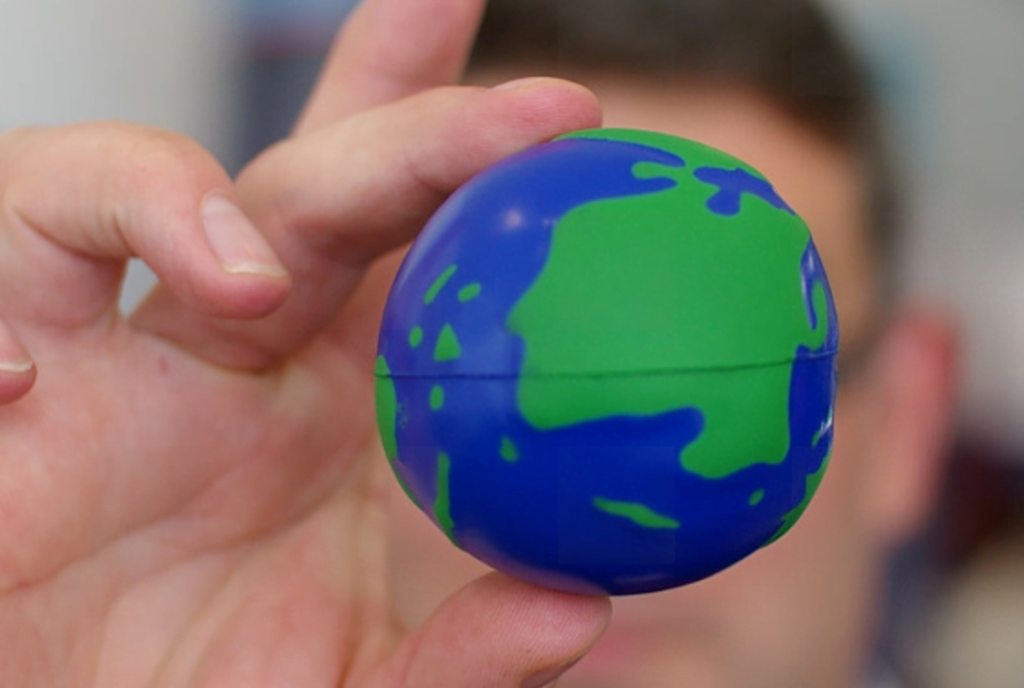
Barry shared this pic of a globe style stress ball, I think it may originate from a proprietary software vendor
MapsintheWild It’s a Squishy World
-
sur Mappery: Collette
Publié: 30 August 2024, 11:00am CEST
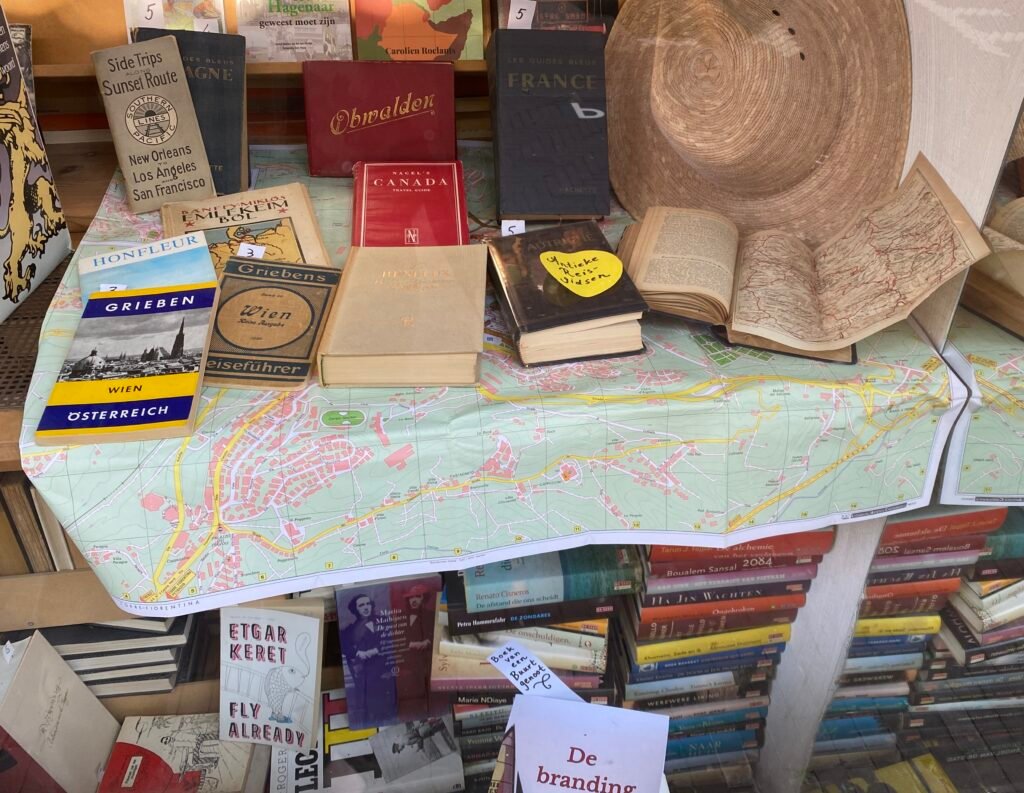
Reinder shared this pic of a shop window display “Cartographically inspired shop window of the 2nd hand bookshop Colette in The Hague”
MapsintheWild Collette
-
sur 245 Russian Military Targets at Risk
Publié: 30 August 2024, 9:54am CEST par Keir Clarke
The Institute for the Study of War (ISW) and Critical Threats have identified hundreds of Russian military sites that are in range of Ukrainian ATACMS. Currently the United States will not allow Ukraine to use US supplied tactical ballistic missiles for long-range deep strikes into Russia. According to the ISW its new map shows "the extent to which US restrictions on Ukraine's use of ATACMS
-
sur Free and Open Source GIS Ramblings: Building spatial analysis assistants using OpenAI’s Assistant API
Publié: 29 August 2024, 8:15pm CEST
Earlier this year, I shared my experience using ChatGPT’s Data Analyst web interface for analyzing spatiotemporal data in the post “ChatGPT Data Analyst vs. Movement Data”. The Data Analyst web interface, while user-friendly, is not equipped to handle all types of spatial data tasks, particularly those involving more complex or large-scale datasets. Additionally, because the code is executed on a remote server, we’re limited to the libraries and tools available in that environment. I’ve often encountered situations where the Data Analyst simply doesn’t have access to the necessary libraries in its Python environment, which can be frustrating if you need specific GIS functionality.
Today, we’ll therefore start to explore alternatives to ChatGPT’s Data Analyst Web Interface, specifically, the OpenAI Assistant API. Later, I plan to dive deeper into even more flexible approaches, like Langchain’s Pandas DataFrame Agents. We’ll explore these options using spatial analysis workflow, such as:
- Loading a zipped shapefile and investigate its content
- Finding the three largest cities in the dataset
- Selecting all cities in a region, e.g. in Scandinavia from the dataset
- Creating static and interactive maps
To try the code below, you’ll need an OpenAI account with a few dollars on it. While gpt-3.5-turbo is quite cheap, using gpt-4o with the Assistant API can get costly fast.
OpenAI Assistant APIThe OpenAI Assistant API allows us to create a custom data analysis environment where we can interact with our spatial datasets programmatically. To write the following code, I used the assistant quickstart and related docs (yes, shockingly, ChatGPT wasn’t very helpful for writing this code).
Like with Data Analyst, we need to upload the zipped shapefile to the server to make it available to the assistant. Then we can proceed to ask it questions and task it to perform analytics and create maps.
from openai import OpenAI client = OpenAI() file = client.files.create( file=open("H:/ne_110m_populated_places_simple.zip", "rb"), purpose='assistants' )Then we can hand the file over to the assistant:
assistant = client.beta.assistants.create( name="GIS Analyst", instructions="You are a personal GIS data analyst. Write and rund code to answer geospatial analysis questions", tools=[{"type": "code_interpreter"}], model="gpt-3.5-turbo", # or "gpt-4o" tool_resources={ "code_interpreter": { "file_ids": [file.id] } } )Then we can start asking questions and giving our assistant tasks:
thread = client.beta.threads.create() message = client.beta.threads.messages.create( thread_id=thread.id, role="user", content="Please load the zipped shapefile and describe the content" )
assistant > The shapefile has been successfully loaded as a GeoDataFrame with the following details: - The GeoDataFrame has 243 entries. - It contains a total of 38 columns with various data types including integer, float, and object types. - One of the columns is a geometry column representing the spatial information. If you have any specific analysis or visualizations you would like to perform on this data, feel free to let me know!The docs have a nice example for how to stream the answers back, e.g. into a Jupyter notebook. I’ve used it to create a small convenience function:
def ask_another_question(question): message = client.beta.threads.messages.create( thread_id=thread.id, role="user", content=question ) with client.beta.threads.runs.stream( thread_id=thread.id, assistant_id=assistant.id, event_handler=EventHandler(), ) as stream: stream.until_done() ask_another_question("Please list the three largest cities")assistant > code_interpreter # Sort the GeoDataFrame by the population in descending order largest_cities = gdf.sort_values(by='pop_max', ascending=False).head(3)[['name', 'pop_max']] largest_cities assistant > The three largest cities in the dataset, along with their maximum population numbers, are as follows: 1. Tokyo: 35,676,000 2. New York: 19,040,000 3. Mexico City: 19,028,000 These cities have the highest recorded maximum population numbers in the dataset. Let me know if you need any further information or analysis!ask_another_question("extract all scandinavian cities ")assistant > To extract all the Scandinavian cities from the dataset, we can filter the GeoDataFrame based on the countries typically considered part of Scandinavia. These countries include Norway, Sweden, Denmark, Finland, and sometimes Iceland. Let's filter the GeoDataFrame to extract the Scandinavian cities. assistant > code_interpreter # List of countries typically considered part of Scandinavia scandinavian_countries = ['Norway', 'Sweden', 'Denmark', 'Finland', 'Iceland'] # Filter the GeoDataFrame for Scandinavian cities scandinavian_cities = gdf[gdf['adm0name'].isin(scandinavian_countries)][['name', 'adm0name']] scandinavian_cities.head() # Displaying the first few Scandinavian cities assistant > Here are some of the Scandinavian cities extracted from the dataset: 1. Reykjavík, Iceland 2. Oslo, Norway 3. Helsinki, Finland 4. København (Copenhagen), Denmark 5. Stockholm, Sweden These are just a few examples of Scandinavian cities present in the dataset. If you would like the complete list or perform any specific analysis on these cities, feel free to let me know!ask_another_question( "please create a world map with all cities (use gray circles) " "with scandinavian cities highlighted as red circles. " )assistant > To create a world map with all cities represented as gray circles and Scandinavian cities highlighted as red circles, we will use the GeoPandas library for mapping. Let's go ahead and create the map. assistant > code_interpreter import matplotlib.pyplot as plt # Plot all cities with gray circles and Scandinavian cities with red circles fig, ax = plt.subplots(figsize=(12, 8)) # Plot all cities in gray circles gdf.plot(ax=ax, color='lightgrey', markersize=5) # Plot Scandinavian cities in red circles scandinavian_cities.plot(ax=ax, color='red', markersize=50, edgecolor='black', label='Scandinavian Cities') # Set the title ax.set_title('World Map with Scandinavian Cities Highlighted', fontsize=16) # Add legend ax.legend() # Display the map plt.show() assistant > It seems that there was an error while plotting the map because the GeoDataFrame `scandinavian_cities` does not have the necessary numeric data to plot the map directly. ... plt.show() output > assistant > Here is the world map with all cities represented as gray circles and Scandinavian cities highlighted as red circles. The map provides a visual representation of the locations of the Scandinavian cities in relation to the rest of the cities around the world. If you need any further assistance or modifications, feel free to let me know!To load and show the image, we can use:
import matplotlib.pyplot as plt import matplotlib.image as mpimg def show_image(): messages = client.beta.threads.messages.list(thread_id=thread.id) for m in messages.data: if m.role == "user": continue if m.content[0].type == 'image_file': m.content[0].image_file.file_id image_data = client.files.content(messages.data[0].content[0].image_file.file_id) image_data_bytes = image_data.read() with open("./out/my-image.png", "wb") as file: file.write(image_data_bytes) image = mpimg.imread("./out/my-image.png") plt.imshow(image) plt.box(False) plt.xticks([]) plt.yticks([]) plt.show() break
Asking for an interactive map in an html file works in a similar fashion.
You can see the whole analysis workflow it in action here:
This way, we can use ChatGPT to perform data analysis from the comfort of our Jupyter notebooks. However, it’s important to note that, like the Data Analyst, the code we execute with the Assistant API runs on a remote server. So, again, we are restricted to the libraries available in that server environment. This is an issue we will address next time, when we look into Langchain.
ConclusionChatGPT’s Data Analyst Web Interface and the OpenAI Assistant API both come with their own advantages and disadvantages.
The results can be quite random. In the Scandinavia example, every run can produce slightly different results. Sometimes the results just use different assumptions such as, e.g. Finland and Iceland being part of Scandinavia or not, other times, they can be outright wrong.
As always, I’m interested to hear your experiences and thoughts. Have you been testing the LLM plugins for QGIS when they originally came out?
-
sur Mappery: Topo Map Chocolate
Publié: 29 August 2024, 11:00am CEST
-
sur The Money Mountains of Los Angeles
Publié: 29 August 2024, 7:52am CEST par Keir Clarke
Nick Underwood has visualized the average median household income in each Los Angeles neighborhood using the analogy of elevation. On his The Topography of Wealth in L.A. map city each neighborhood is displaced 'vertically based on median annual household income'. The map uses census data to show the average household income in each Los Angeles neighborhood as a 3D tower. Sea level on
-
sur EOX' blog: Sentinel-2 Cloudless 2023
Publié: 29 August 2024, 2:00am CEST
We are thrilled to announce the latest release of EOxCloudless 2023 imagery. Whether you are an existing customer or new to EOxCloudless, this latest update offers clarity with beautiful sceneries and is designed to meet the needs of our users in a convenient way. With the everchanging and more cha ... -
sur Oslandia: (Fr) [Story] Oslandia x QWC : épisode 1 / 8
Publié: 28 August 2024, 4:51pm CEST
Sorry, this entry is only available in French.
-
sur Mappery: Deventer
Publié: 28 August 2024, 11:00am CEST
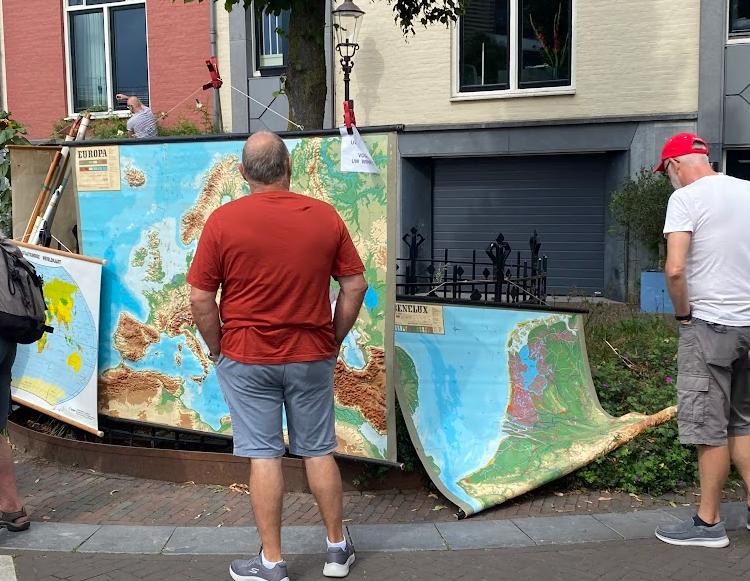
Reinder sent these pics from the second hand book market in Deventer “… at the largest 2nd hand book market of Europe (August 4, 2024) of course there was also some cartographical material for sale.”

MapsintheWild Deventer
-
sur Text Search for Street View
Publié: 28 August 2024, 10:29am CEST par Keir Clarke
all text for nyc (brooklyn) is a very impressive search engine which allows you to search Google Maps Street View imagery for any word. In the words of its developer it is "a unique digital archive of Brooklyn's typography. Users can search and visualize every sign, notice, and street art captured in street images".Enter any word (or combination of words) into 'all text for nyc' and it will -
sur WorldGuessr on Street View
Publié: 27 August 2024, 11:03am CEST par Keir Clarke
My seemingly endless quest to find an alternative to GeoGuessr may be finally over. GeoGuessr is (rightly) by far the most popular Google Maps game on the internet. Unfortunately GeoGuessr's subscription charges mean I can't afford to play it very often. Which means I'm always on the look-out for free alternatives.GeoGuessr is an online geography game that challenges players to identify
-
sur Mappery: Keighley & Worth Valley Railway
Publié: 27 August 2024, 11:00am CEST

Doug shared this old railway map, you might think this an old relic that he spotted but – no! This 150 year old railway line closed in 1962 and was reopened a few years later, you can read more here and you can still travel on the line.
MapsintheWild Keighley & Worth Valley Railway
-
sur GeoTools Team: GeoTools 30.5 released
Publié: 26 August 2024, 11:23am CEST
The GeoTools team is pleased to the release of the latest stable version of GeoTools 30.5:geotools-30.5-bin.zip geotools-30.5-doc.zip geotools-30.5-userguide.zip geotools-30.5-project.zip This release is also available from the OSGeo Maven Repository and is made in conjunction with GeoServer 2.24.5. The release was made by Andrea Aime (Geosolutions) -
sur Mappery: Globe Teapot
Publié: 26 August 2024, 11:00am CEST
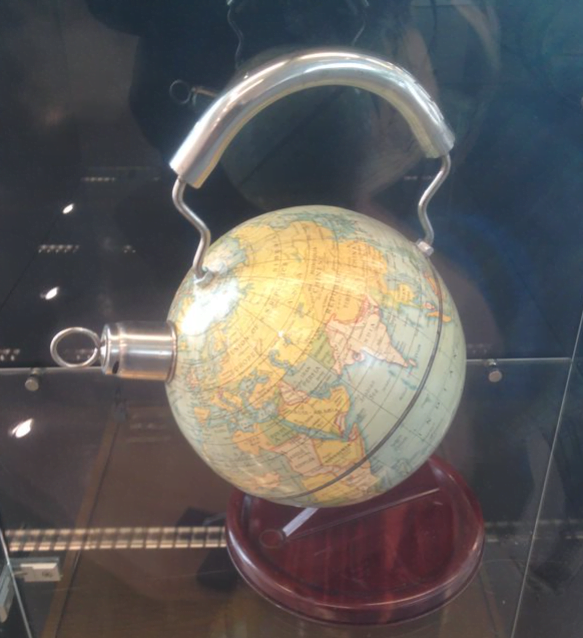
Another one from Reinder Storm. “Don’t remember whether I sent this before, don’t remember where and when I saw this one – but I do know that I like it …”
I am sure the tea will have an international flavour in this pot.
MapsintheWild Globe Teapot
-
sur How Smooth is the Earth?
Publié: 26 August 2024, 10:01am CEST par Keir Clarke
One of the most interesting facts that I learned from the BBC TV series QI was that the Earth is smoother than a billiard ball. Unfortunately, like nearly every other fact I've remembered from that show, it is a load of bull (or should that be balls).Shri Khalpada has created a three.js powered 3D globe of the Earth which allows you to view the Earth's elevation profile to scale (and when
-
sur Mappery: Mount Rainier Time Map
Publié: 25 August 2024, 11:00am CEST
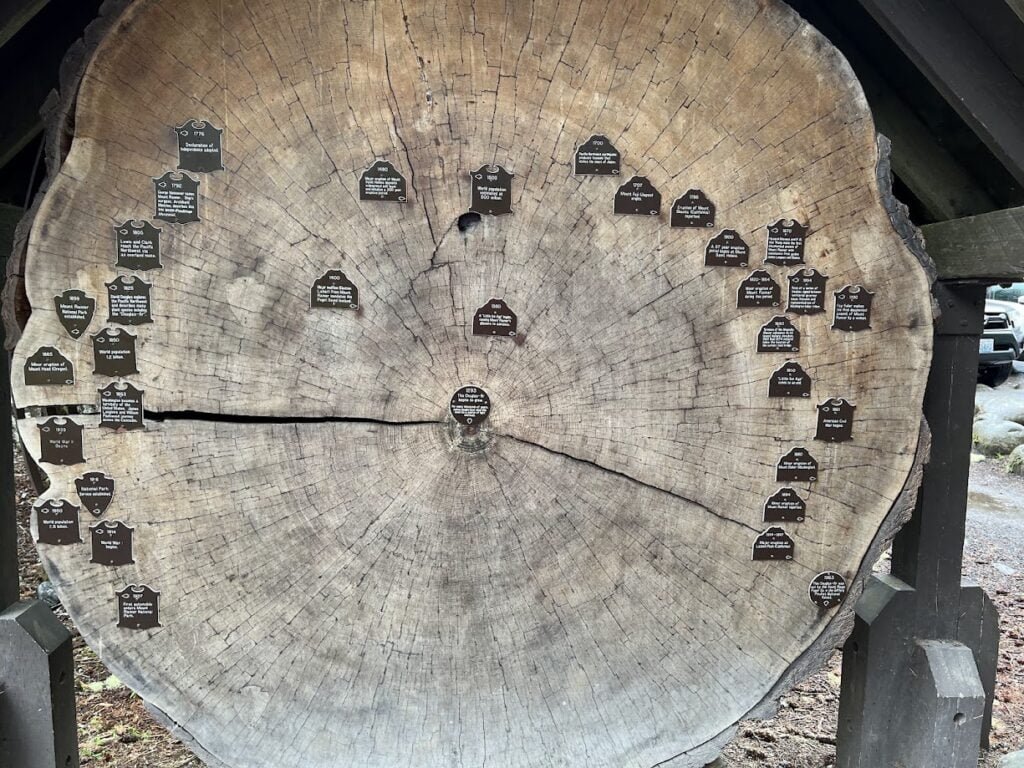
Another pic from Krista Mott’s roadtrip. “At Mount Rainier National Park there was one of the felled Douglas-fir, that began to grow in 1293, depicts a map of time”
I am expecting a bit of “That’s not a map!” feedback but it sure looks like one to me and it definitely is wild.
MapsintheWild Mount Rainier Time Map
-
sur Have You Earned Your Air Pollution Stripes?
Publié: 24 August 2024, 11:13am CEST par Keir Clarke
Ed Hawkins' Climate Stripes visualization of global heating has quickly become a data visualization classic. Climate Stripes (sometimes known as Warming Stripes) are a visual representation of the long-term increase in global temperatures due to climate change. Ed's striking Climate Stripes visualizations consist of colored vertical stripes, with each stripe representing a single year and
-
sur Mappery: Phillipines in Ipswich, Massachusetts
Publié: 24 August 2024, 11:00am CEST
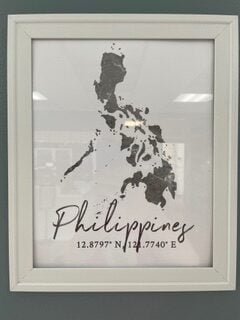
Judy Tymon sent us this pic “I found this map at a new local cafe here in Ipswich Massachusetts. The cafe is called “The M Cafe”, M for Manila, capital of the Philippines. I liked it because it shows the outline of the country along with the lat/long. And of course the cafe is owned by a woman from the Philippines.”
MapsintheWild Phillipines in Ipswich, Massachusetts
-
sur Free and Open Source GIS Ramblings: MovingPandas 0.19 released!
Publié: 23 August 2024, 6:30pm CEST

This release is the first to support GeoPandas 1.0.
Additionally, this release adds multiple new features, including:
- New explore() function adds interactive folium / leaflet maps
- New support for mfjson trajectory

For the full change log, check out the release page.
We have also revamped the documentation at [https:]] using the PyData Sphinx Theme:

On a related note: if you know what I need to change to get all Trajectory functions listed in the TOC on the right, please let me know.
-
sur geomatico: Ética y economia: ¿son viables los proyectos geoespaciales de software libre?
Publié: 23 August 2024, 12:56pm CEST
Pièce jointe: [télécharger]
Jornadas SIG Libre 2024
En la XVII edición de las Jornadas de SIG Libre, debate plenario sobre «viabilidad económica de los proyectos de software libre en datos geoespaciales» en el que participamos con Òscar Fonts, nuestro CTO.
- 0:00 Introducción Gemma Boix, directora del SIGTE – UdG
- 2:30 Angelos Tzotsos (OSGeo)
- 29:20 Óscar Fonts (Geomatico)
- 42:40 Josep Lluís Sala (BGeo)
- 55:30 Iván Sánchez
-
sur Mappery: Light Pollution in the Netherlands
Publié: 23 August 2024, 11:00am CEST
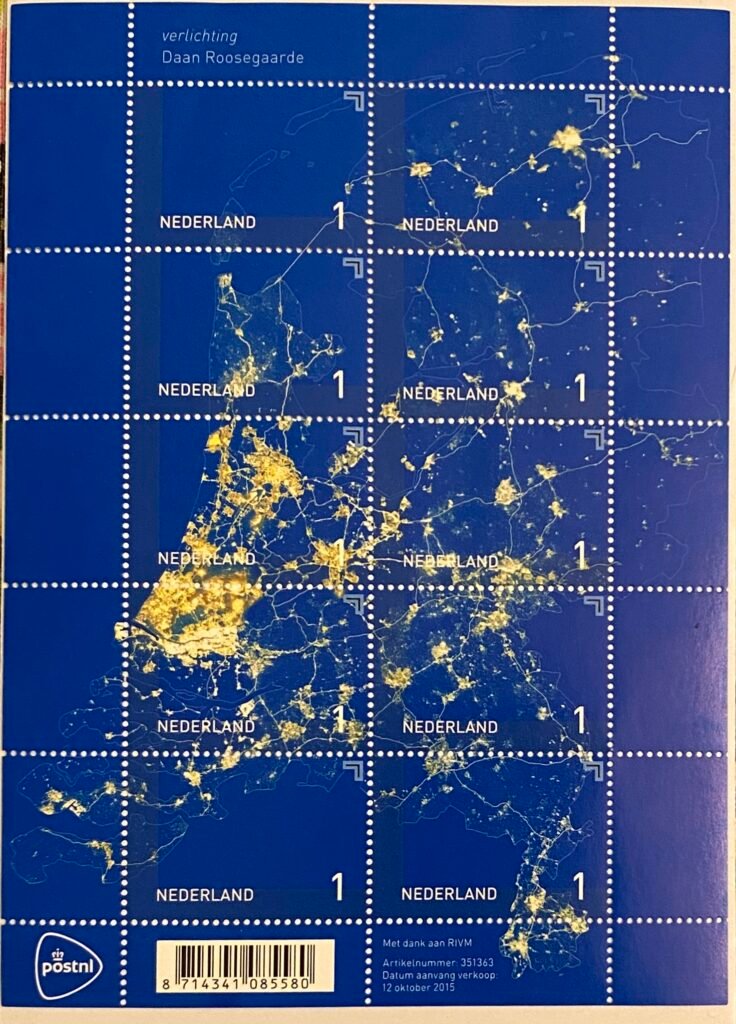
Reinder shared these stamps “These stamps were issued in The Netherlands in 2015. They present an image of light pollution. Artist / designer Daan Roosegaarde has created these illuminated stamps for PostNL. The stamp sheet shows a modern map of the Netherlands on a clear night in spring. The stamps provide insight into the daily use of light.”
We haven’t had that many maps in the wild stamps, surely there must be a load more out there?
MapsintheWild Light Pollution in the Netherlands
-
sur 200 Years of Irish Map
Publié: 23 August 2024, 10:54am CEST par Keir Clarke
The first ever large-scale survey of an entire country was started nearly 200 years ago. From 1825 to 1846 the Irish Ordnance Survey undertook a highly detailed survey of the whole of Ireland in order to create maps primarily at the 6 inch scale.To celebrate 200 years of Irish mapping the University of Limerick and Queen’s University Belfast has created OS200. The OS200 website is a digital
-
sur Mappery: Where do you come from?
Publié: 22 August 2024, 11:00am CEST
Krista Mott sent us this pic from her roadtrip in the north west US. “On the way home, we stopped in Seattle at Pike Place Market where I found this “Show us where you came from!” map. Quite a great representation of visitors from around the world.
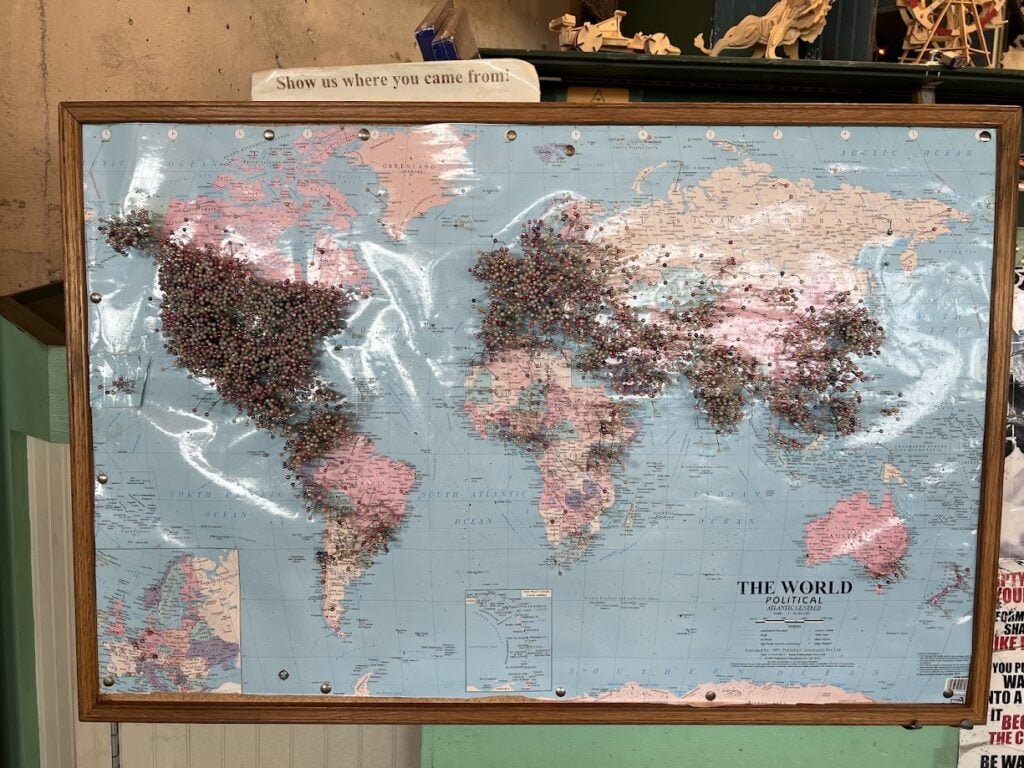
MapsintheWild Where do you come from?
-
sur Population Flags
Publié: 22 August 2024, 9:18am CEST par Keir Clarke
World Population Flags is a Dorling cartogram in which country flags are sized by population. The cartogram is used to visualize where people live around the world and the relative size of each country's population.A Dorling cartogram is a thematic map that is used to visualize quantitative data. On a Dorling cartogram areas are represented by circles rather than their actual geographic
-
sur Mappery: Global Architectural Salvage
Publié: 21 August 2024, 11:00am CEST
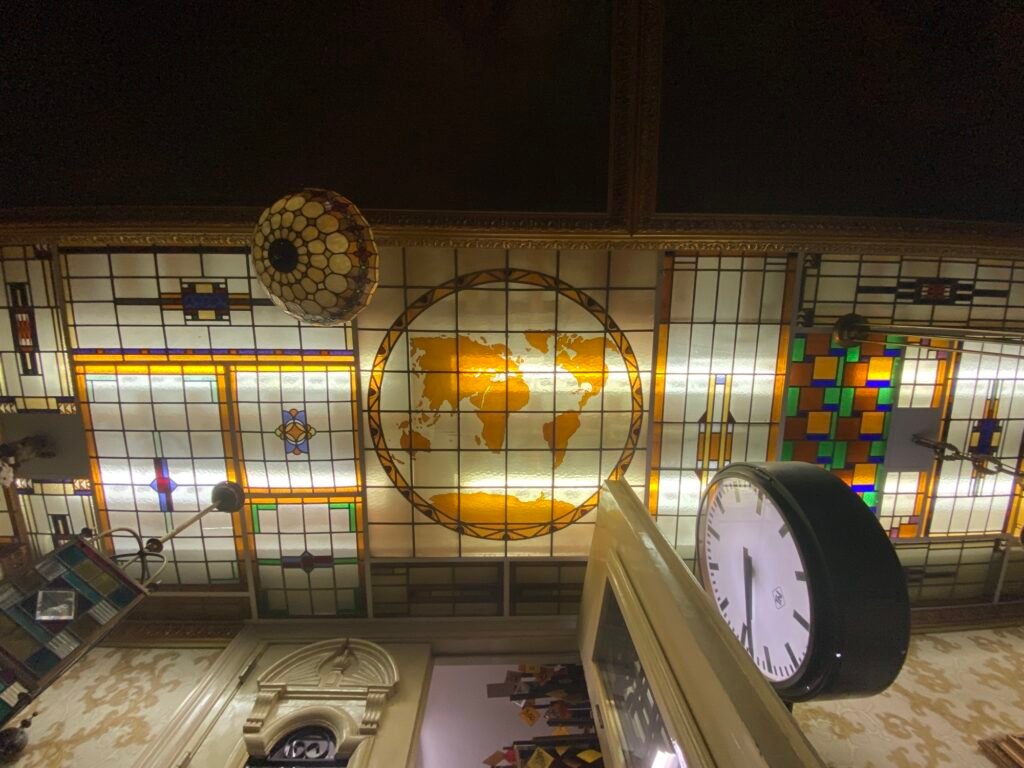
Reinder is on form at the moment with a string of great pics.
“in a shop / workplace where they sell (an awful lot of) antique building materials. I’m not sure whether this is stained glass — or some other technique. I’m sure that I like it!” – we like it too, I think it is painted glass rather than stained
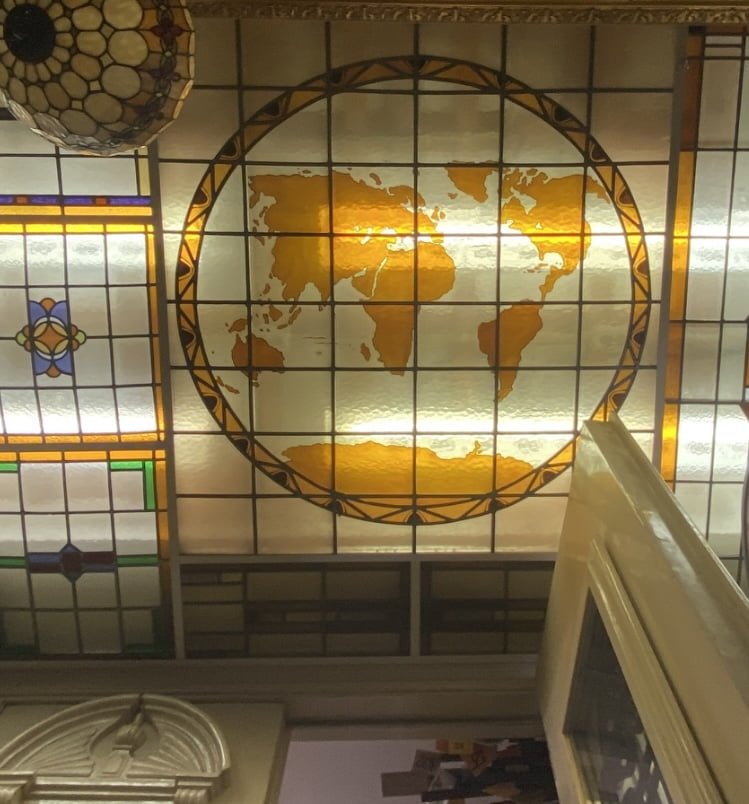 Screenshot
ScreenshotMapsintheWild Global Architectural Salvage
-
sur One Million Screenshots. One Map!
Publié: 21 August 2024, 9:52am CEST par Keir Clarke
Over the years a number of people have used the popular Leaflet.js mapping library to map image datasets. For example Nathan Rooy's Visual Book Recommender uses Leaflet to map the images of 51,847 book covers. The Pudding has also mapped images of 5,000 book covers on its 11 Years of Top-Selling Book Covers, Arranged by Visual Similarity. Mapping libraries have also been used in the
-
sur Mappery: The Places of Hawaii
Publié: 20 August 2024, 11:00am CEST
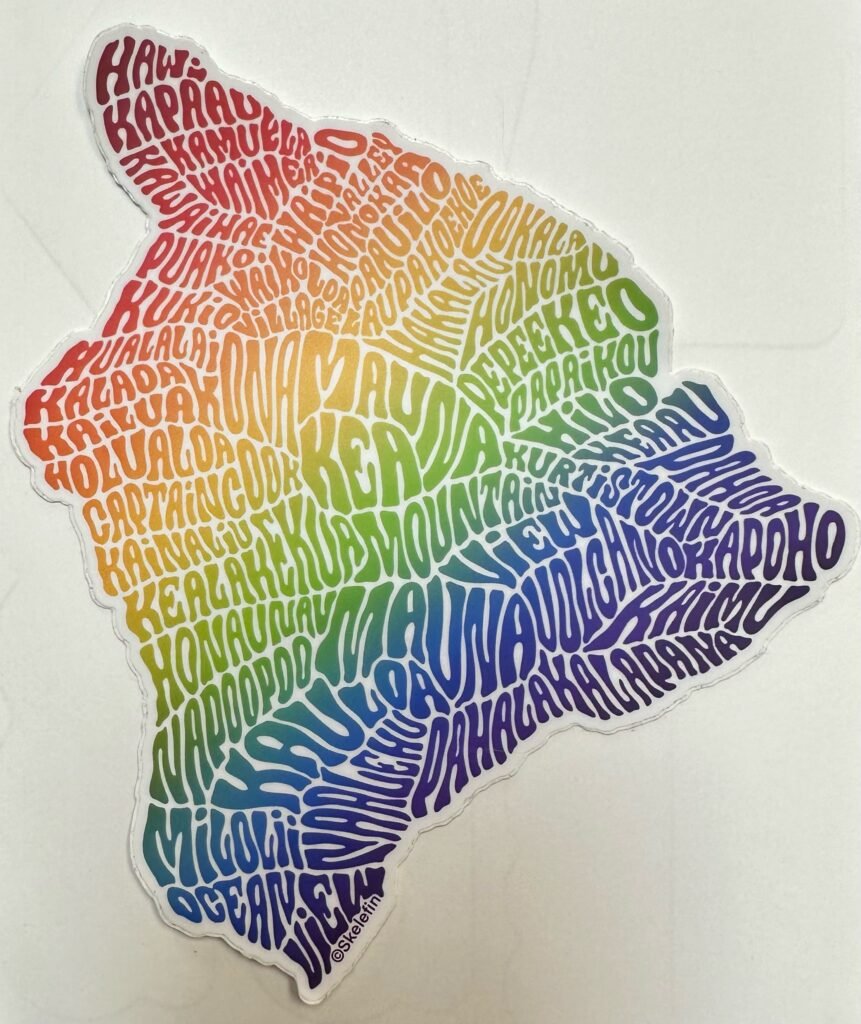
Scott Simmons sent us a pic of this superb sticker from Hawaii, “I found this great sticker on a recent vacation to the island of Hawai’i. The place names are all in their approximate correct location and the artist cleverly chose more important names to prioritize, while still filling the map quite evenly.”
Let’s have some more of these
MapsintheWild The Places of Hawaii
-
sur How to Make Your Own Map Jigsaw Puzzle
Publié: 20 August 2024, 10:03am CEST par Keir Clarke
I've been having a lot of fun over the last few days playing the map puzzles created by the Map Puzzle Factory. However I have been a little frustrated by the Japanese place-names used in the puzzles. I therefore decided to try to create my own map jigsaw puzzle using a map in which the place-names are displayed in English.My Scrambled City game is a simple map of the City of London. Press
-
sur Mappery: The Parade
Publié: 19 August 2024, 11:00am CEST
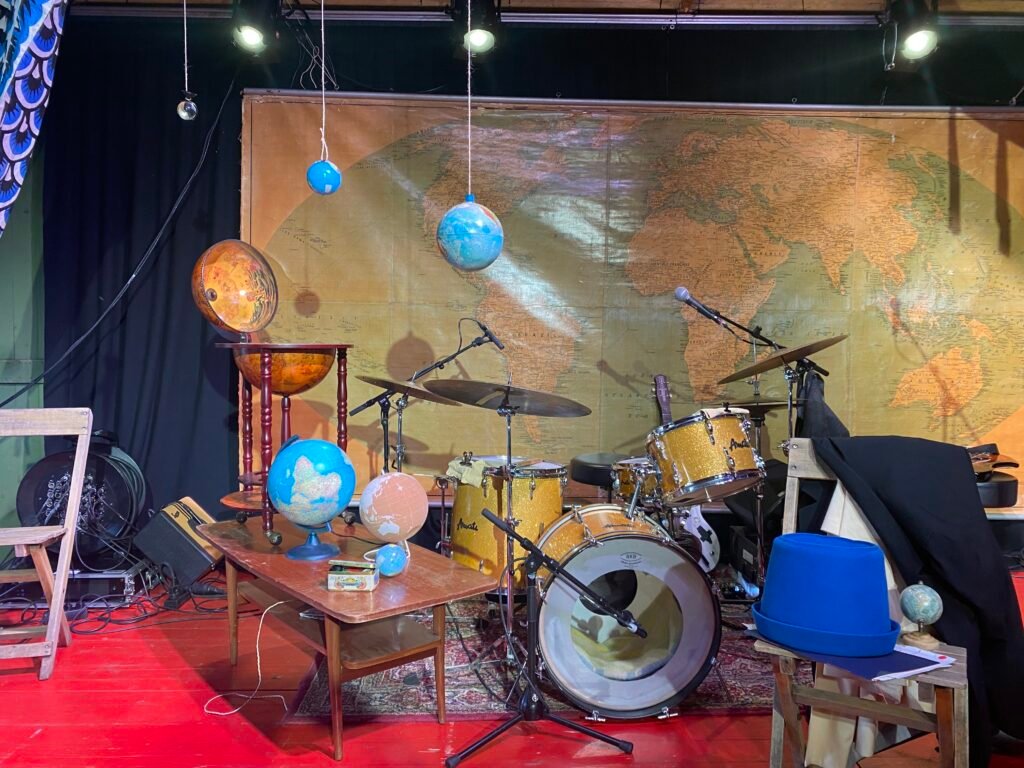
Reinder shared these pics of a gig that he saw recently, the band seem to be very into globes and maps.
“… on the Parade: a travelling theatrical festival in the Netherlands, 18th of July 2024. Cf [https:]] .
“Pop-music meets theater in a light-hearted and quirky concert. Looking at the mysterious word “fundamental”, these men create a bit of chaos in all order. Don’t we see the world fundamentally different than it really is: a dustball in the wind?”
I did quite like it and hope you do as well.”
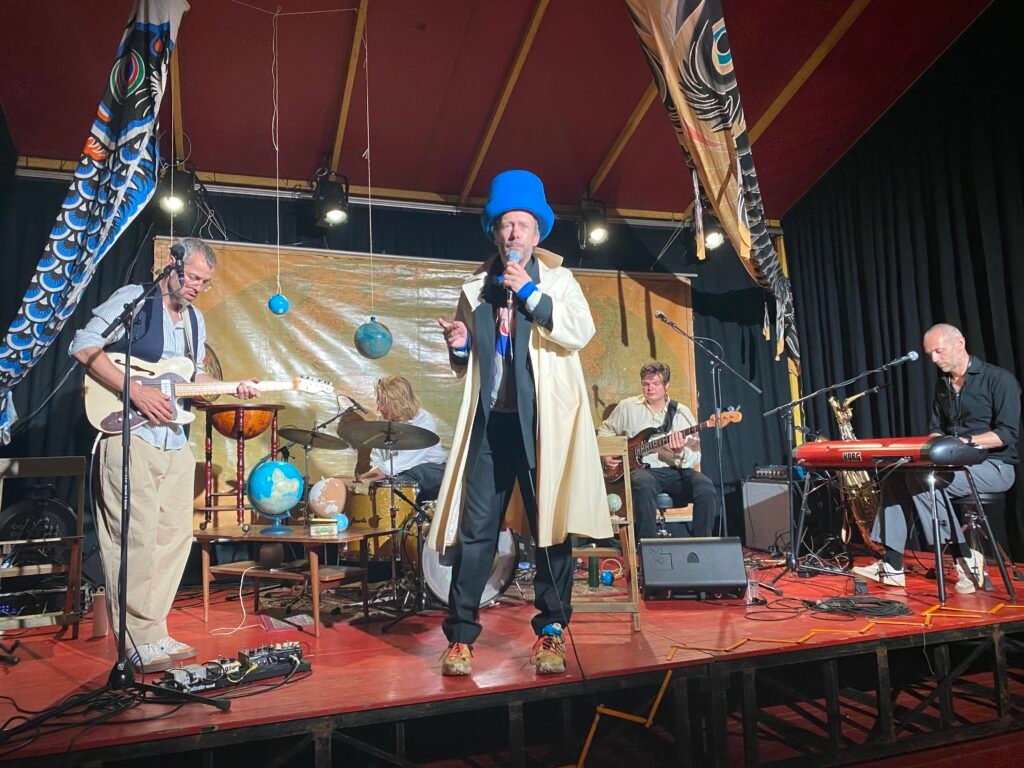
We say what’s not to like (except possibly the music)
MapsintheWild The Parade
-
sur Piecing the World Back Together
Publié: 19 August 2024, 9:55am CEST par Keir Clarke
The world is fractured and divided like never before. Your mission, if you choose to accept it, is to put the Earth back together.The Map Puzzle Factory is a huge collection of map puzzles. Each puzzle is a map of a part of the world which has been divided into a collection of small squares. You simply have to drag the squares into their correct position on the map. In other words - each game
-
sur Mappery: Trollhatte Kanal
Publié: 18 August 2024, 11:00am CEST
Marc-Tobias spotted this van “Seen in [https:]] Includes a scale in kilometers and proper compass!”
That’s the first time I have seen a scale bar on an a map in the wild
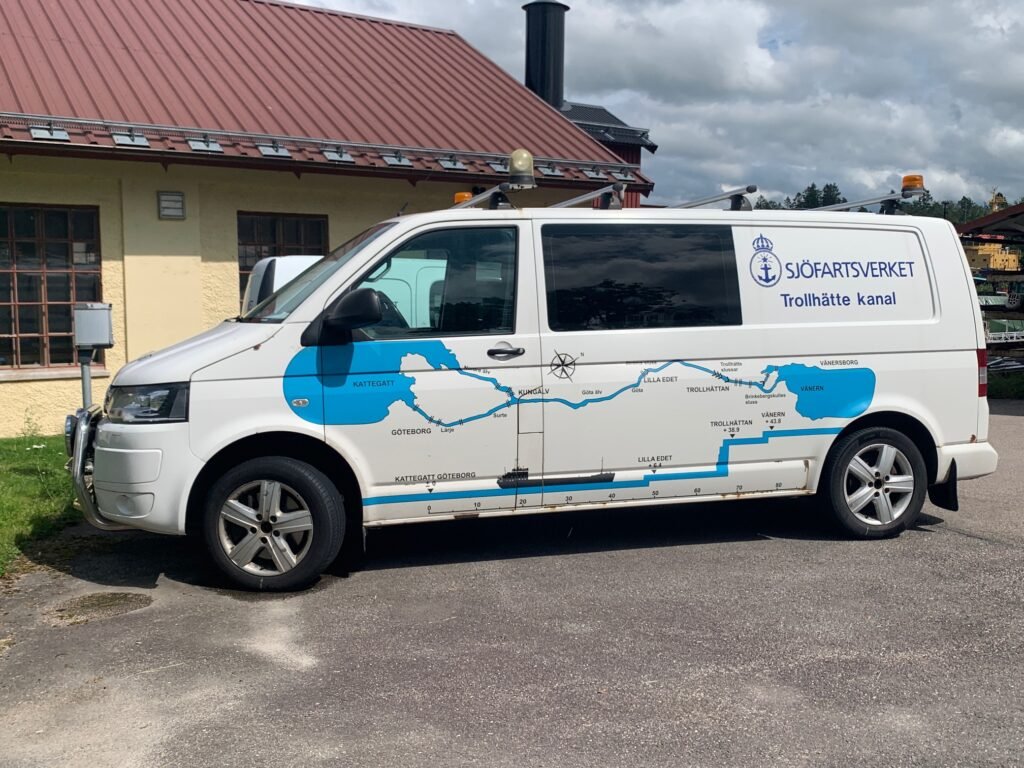
MapsintheWild Trollhatte Kanal
-
sur GeoServer Team: GeoServer 2.24.5 Release
Publié: 18 August 2024, 2:00am CEST
GeoServer 2.24.5 release is now available with downloads (bin, war, windows), along with docs and extensions.
This is a maintenance release of GeoServer providing existing installations with minor updates and bug fixes. GeoServer 2.24.5 is made in conjunction with GeoTools 30.5, and GeoWebCache 1.24.5.
Thanks to Andrea Aime for making this release.
Release notesImprovement:
- GEOS-11336 security-keycloak: upgrade keycloak version
- GEOS-11443 REST API does not take effect immediately due to 10 minute authentication cache
- GEOS-11463 WMS vector dimension validation should query only one feature and only for dimension attribute
- GEOS-11502 Permit resize on user/group/role palette textbox to allow for extra long role names
Bug:
- GEOS-11446 [INSPIRE] Incorrect behavior for unsupported languages
- GEOS-11453 Failure to look-up default value of custom dimensions on vector layers
- GEOS-11462 500 error thrown when double adding a user to a group via REST with JDBC user/group services
- GEOS-11484 DirectRasterRenderer is not respecting advancedProjectionHandling and continuosMapWrapping format_options
- GEOS-11493 Azure blob store may not get environment parameters from property file
Task:
- GEOS-11464 Update Jackson 2 libs from 2.17.1 to 2.17.2
For the complete list see 2.24.5 release notes.
Community UpdatesCommunity module development:
- GEOS-11111 Open search for EO community module: STAC search page has wrong self link
Community modules are shared as source code to encourage collaboration. If a topic being explored is of interest to you, please contact the module developer to offer assistance.
About GeoServer 2.24 SeriesAdditional information on GeoServer 2.24 series:
- GeoServer 2.24 User Manual
- Control remote HTTP requests sent by GeoTools/GeoServer
- State of GeoServer 2.24.1 (foss4g-asia presentation)
- Multiple CRS authority support, planetary CRS
- Extensive GeoServer Printing improvements
- Upgraded security policy
Release notes: ( 2.24.5 | 2.24.4 | 2.24.3 | 2.24.2 | 2.24.1 | 2.24.0 | 2.24-RC )
-
sur Mappery: Matthijs Röling
Publié: 17 August 2024, 11:00am CEST
Reinder shared this pic of a book cover “Suddenly it occurred to me that the cover of this book by the Dutch writer Jean Pierre Rawie is decorated with a painting by Matthijs Röling, and that he added a globe to this still life.”
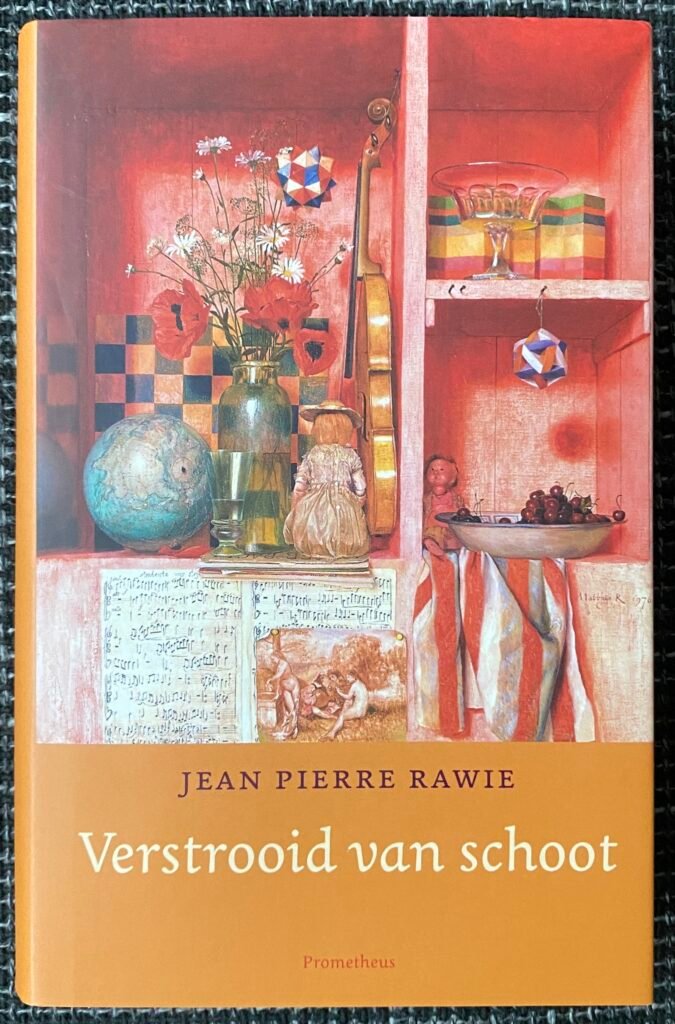
MapsintheWild Matthijs Röling
-
sur Turning Gaza to Rubble
Publié: 17 August 2024, 9:03am CEST par Keir Clarke
This week the Gaza health ministry reported that 40,000 Palestinians have been killed in Gaza since Israel started attacking the territory in October. Over a third of those killed have been children. Much of Gaza itself has also been turned to rubble.According to Bloomberg Israeli air strikes on Gaza have created 42 million tonnes of debris in the Strip. That is "enough rubble to fill a line of
-
sur XYCarto: Cartographic Aotearoa
Publié: 17 August 2024, 3:38am CEST
I try hard to keep this blog about basic open source processing in GIS. I don’t spend much time talking about my cartographic work, since I like put it up in the gallery and try to let it speak for itself. Further, 90% of my cartographic products involve processing data before it ever gets to visualization, therefore, I see more value in demonstrating the basic processing and hopefully inspire folks to do their own thing once their data is in place.
If you might indulge me; however, I’d love to toot my own horn as they say and do a write up on my acceptance to the Atlas of Design this year and the honor to do a brief interview with Radio New Zealand (RNZ) about the map.
I know it is a bit cheeky to put up recognition of one’s own work, but this map was the culmination of several years of iterations, heaps of footwork getting it known, and a number of rejections along the way. I’m just so excited to finally get it out there to a wider audience.
Since this is primarily an open source blog about GIS, and that several have asked me about my tech stack I’ll share a portion of it here. If you want to get a feel of some of my blending techniques, you can see some past blogs where I wrote this up.
As I mentioned above, that vast majority of my cartography is in data prep and making data easier to work in visualization projects. I have a fairly simple tech stack for data prep.
- QGIS – Base map layout. My method is most often to develop the base image here, but do all the post processing for legends, supporting text, graphics, etc in specialized layout software. QGIS is amazing at handling large file types, blending, and making repeatable color palettes. Doing work at a national and world scale is often without issue.
- GDAL – Most used in the stack for prepping large scale raster data. Used more than anything else in GDAL for my vis work is gdalwarp, gdal_translate, gdaladdo, gdalbuildvrt, and gdaldem [hillshade, slope]. These are often used in bash scripts to repeat processes allowing me to easily develop multiple resolutions, scales, and resamples.
- GeoPandas – Used for vectors and primarily for my cleaning to get lighter GPKG files, automating redundant processes like clips, simplification, and table manipulation. It is an amazing tool I use a lot in development too.
- Python/Bash – Used for controlling all the automation and processing. Depending on the complexity of the task at hand, I will bounce between the two. Bash is really great at multi-core processing and can save enormous amounts of time in redundant processes.
- Colorhexa /Gpick – Palette development. Gpick is incredibly helpful in sampling imagery to find a color value you like. You can bring these values into Colorhexa and start to develop gradients and divergent values all the while keeping within your tone. There are many other sites that will help you do this, I just happen to enjoy this one.
- Docker – An unlikely item in a cartographic stack, but Docker has proved invaluable to me by allowing me to run multiple versions of QGIS and GDAL without wrecking my machine. I have a basic QGIS/Docker example here.
For those out there who have supported me on this journey and even those who lurk in the shadows, I cannot thank you enough for reading, liking, and sending me messages letting me know you are out there and find some of this useful. It helps more than you know and motivates me to continue to move forward. Also, tell all your friends!
-
sur QGIS Blog: Reports from the winning grant proposals 2023
Publié: 16 August 2024, 4:18pm CEST
With the QGIS Grant Programme 2023, we were able to support six proposals (four in the first round and two in the second round) that are aimed to improve the QGIS project, including software, infrastructure, and documentation. The following reports summarize the work performed in the first four proposals:
- QGIS Bug Tracker cleanup (#266) – Report
We have identified and closed ~291 tickets, among them:- 162 bugreports and feature requests which were already fixed or implemented
- 29 bugreports and feature requests which are invalid (data issues, wrong use of functionality, etc)
- 57 duplicate bugreports and feature requests
- 5 won’t fix bugreports
- 5 bugreports were converted to feature requests
- 33 tickets were closed (does not contain steps to reproduce, test data and no feedback was provided within several month)
- Additionally we ensured that all tickets has correct tags assigned to to make them easier to find.
- Porting to C++ and harmonization of Processing algorithms (#271) – Report
The QGIS Porting to C++ and Harmonisation of Processing Algorithms grant is now complete.- Existing Processing algorithms Voronoi Polygons and Delaunay Triangulation have been ported to C++ and now use GEOS instead of the unmaintained Python module.
- Two algorithms for generating XYZ tiles (directory and MBTiles variants) have been ported to C++ using a safer and cleaner multi-threading approach.
- The Align Rasters tool, which was not exposed to Processing, has been removed and a new Processing algorithm with the same functionality has been added.
- The existing Raster Calculator algorithm has been ported to C++. The algorithm now has two variants: a toolbox version that works the same way as before, and a modeler version that uses the same approach to input naming as the GDAL raster calculator.
- Add vertical CRS handling to QGIS (#267) – Report
- As of QGIS 3.34, QGIS can now create and handle vertical and compound CRSes.
- In QGIS 3.34 coordinate transforms were reworked so that they function correctly with vertical transformation, if both the source and destination CRS have vertical components.
- In QGIS 3.36 the coordinate reference selection widgets were updated to offer choices of 2d only, compound, or vertical only CRSes.
- In version 3.38, we introduced a new setting for QGIS projects, for their vertical reference system. Users can control this through project properties, and it’s accessible via PyQGIS and via associated expression variables (eg @project_vertical_crs) for use in print layouts.
- Similarly, in 3.38 we introduced the API support for map layers to have a vertical CRS. (This was not exposed to users in 3.38 though)
- In QGIS 3.40 so far we have exposed the vertical CRS setting for vector layers to users (via the layer properties dialog), allowing users to specify the associated vertical CRS for these layers. The vertical CRS is respected in elevation profile plots, in Identify tool results, and in 3D Map views (assuming the 3D map is created with an associated vertical CRS).
- There is an open pull-request for 3.40 to expose the vertical CRS for point cloud layers in a similar way, with the vertical CRS being respected in elevation profiles, identify tool results, and 3D map views
- We have open pull requests for 3.40 to show layer vertical CRS information in the layer properties “information” pages, and add expression variables at the layer scope (eg @layer_vertical_crs).
- Improve test result handling on QGIS CI (#268) – Report
Any tests which fail a rendering comparison will write a descriptive comment to the PR. The comment details which render tests failed, where they are in the code, and includes some helpful pointers to downloading the full test report and the QGIS developer documentation. We also implemented lots of improvements in running the tests locally and how the render test reports are generated and presented to developers.
Thank you to everyone who participated and made this round of grants a great success and thank you to all our sustaining members and donors who make this initiative possible!
- QGIS Bug Tracker cleanup (#266) – Report
-
sur Mappery: yNot Festival
Publié: 16 August 2024, 11:00am CEST
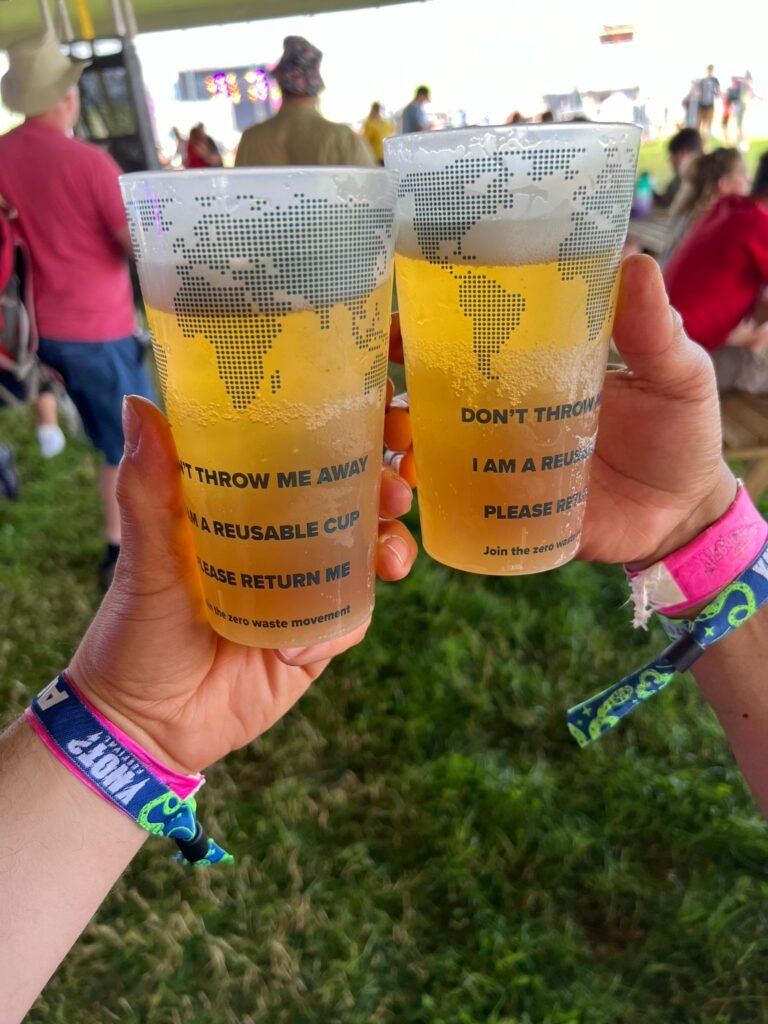
Jeremy shared a pic of the recyclable beer glasses at the yNOT festival. Is that a semi-conical projection?
MapsintheWild yNot Festival
-
sur Markus Neteler: GRASS GIS 8.4.0 released
Publié: 16 August 2024, 10:20am CEST
The GRASS GIS 8.4.0 release provides more than 520 improvements and fixes with respect to the release 8.3.2.
The post GRASS GIS 8.4.0 released appeared first on Markus Neteler Consulting.
-
sur How the World Powers Itself
Publié: 16 August 2024, 9:33am CEST par Keir Clarke
You can learn a lot about how the world powers itself from the Global Energy Monitor's Power Tracker. This interactive map shows the locations of nearly 18,000 power stations in 200 countries around the world, categorized by power sector.Using the map's filter controls it is possible to explore where different types of power stations are distributed around the world. This allows you, for
-
sur Mappery: Zierikzee
Publié: 15 August 2024, 11:00am CEST
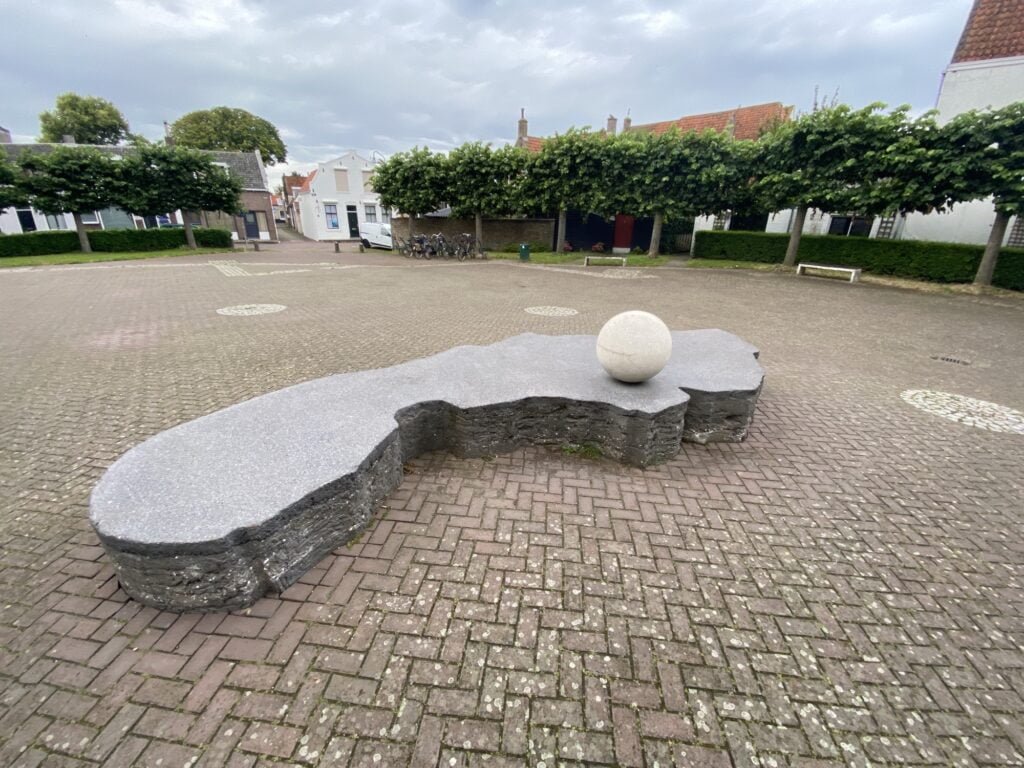
Reinder sent us this interesting map sculpture “I spotted this specimen of street furniture — in fact: my wife did. What you see is the outline of the island Schouwen-Duiveland, part of the Dutch province Zeeland. The white ball is actually on the spot of the town Zierikzee. Very quiet and charming now, but it has quite a notorious history. “
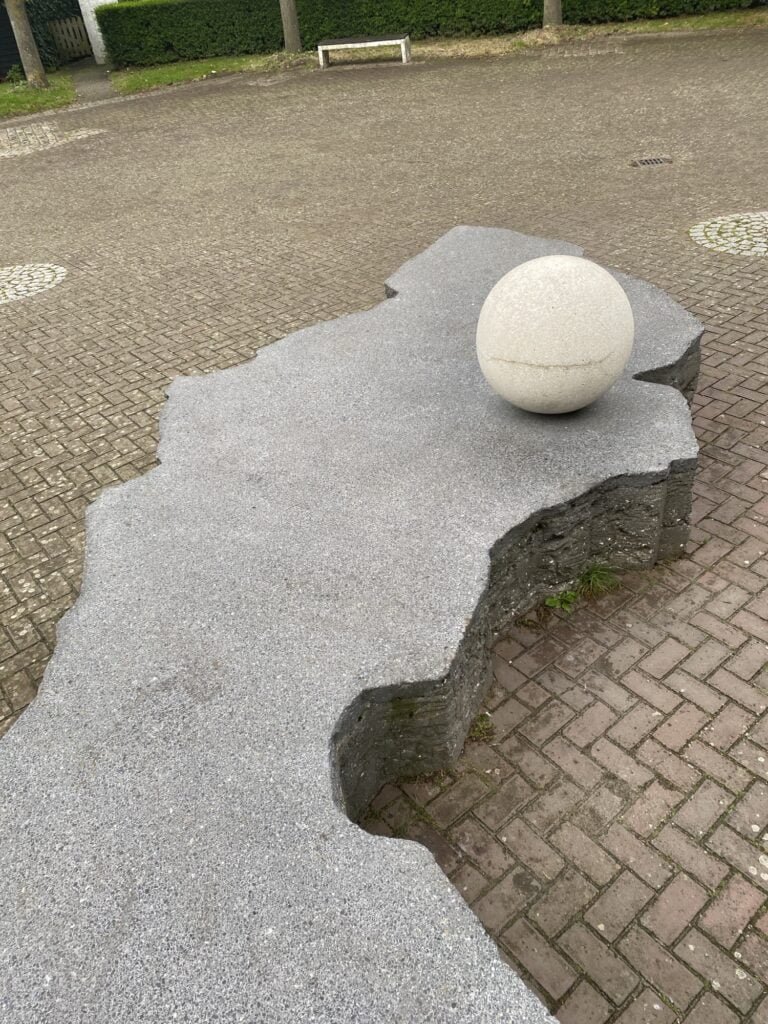
Well done Mrs Storm!
MapsintheWild Zierikzee
-
sur Virtual Indian Independence Day
Publié: 15 August 2024, 10:45am CEST par Keir Clarke
Today is Indian Independence Day. On this day India celebrates its independence from the United Kingdom. On 15 August 1947 Jawaharlal Nehru, the first Prime Minister of India, raised the Indian flag above the Lahori Gate of the Red Fort in Delhi. Since then every year on Independence Day the incumbent Prime Minister repeats the ceremony by raising the flag over the Red Fort and by addressing
-
sur Jackie Ng: Announcing: MapGuide Open Source 4.0 Beta 2
Publié: 14 August 2024, 9:40pm CEST
This took way longer than expected, but the 2nd beta release of MapGuide Open Source is now available.
The main driver for this release is to update our various web tier components to their latest respective versions:
- PHP 8.1.29
- Apache [httpd] 2.4.62
- Apache Tomcat 9.0.89
- Installer
- Newer libpq.dll (PostgreSQL 16.3) bundled with Windows installer
- Server Tier
- Fix instability on Linux due to criss-crossed resolution of sqlite3 and geos symbols to our shared libraries instead of the distro-provided versions
- Repository admin tools have been momentarily pulled from this and future beta releases until the admin scripts have been updated and/or rewritten. As a workaround, use MapGuide Package files to backup/restore repository content
- Removed immature MVT tile rendering support. If you want to produce Mapbox Vector Tiles, use any tool from this list
- Web Tier
- Fix QUERYMAPFEATURES SelectionKey containing a newline char, breaking client-side reconciliation of selected features
- More PHP8 compatibility fixes in PHP AJAX Viewer
- Fix bad instanceof exception checks in PHP AJAX Viewer
- More PHP8 compatibility fixes in Site Administrator
- Buffer overflow fixes in WMS/WFS service layer
- New optional --bind-to parameter for MgDe [HttpServer]
- InstantSetup
- Fix crash if no setup log path specified when configuring
- Samples
- Fix bad extents in SheboyganXYZ tileset
Download
Note: Trac is a bit flaky right now, so the release notes page may not display. If that happens just retry with browser refreshes. Failing that, you can find all the necessary download links in my release announcement email -
sur WhereGroup: Plugins entwickeln für PhpStorm am Beispiel von Mapbender
Publié: 14 August 2024, 3:40pm CEST
Integrierte Entwicklungsumgebungen (IDEs) bringen von Haus aus schon viel Funktionalität mit. Fehlt allerdings noch eine Funktionalität, lässt sich diese oft auch über ein selbst entwickeltes Plugin ergänzen. -
sur Mappery: Canada Dry
Publié: 14 August 2024, 11:00am CEST

Kate shared this “Neat (and mappy!) Final Jeopardy trivia from the other night: “Early 1900s labels for this beverage brand featured a beaver sitting on a log at the top of a map.”
I am wondering whether the “Dry” refers to the taste or Prohibiton
MapsintheWild Canada Dry
-
sur Mapping Train Connections
Publié: 14 August 2024, 9:34am CEST par Keir Clarke
For ecological reasons I haven't taken a flight in over 30 years. Consequently I have probably spent many, many hours traveling across Europe by train. One of my retirement plans is to spend winters in Southern Italy. I have begun therefore to research how best to travel by train to southern Italy.According to TrainConnections the best plan is probably to break the journey into two - to take one
-
sur Mappery: Maps in a Bar
Publié: 13 August 2024, 11:00am CEST

When Erik was in Dubrovnik for a conference he ended up in this bar with colleagues. “With the #CLGE delegates you always end up at a #MapsintheWild bar…”
MapsintheWild Maps in a Bar
-
sur Russia's Secret Nuclear Targets in China
Publié: 13 August 2024, 9:39am CEST par Keir Clarke
The Financial Times has obtained secret Russian military files which detail how Russian forces train to use tactical nuclear weapons against both NATO and China.A story-map in the article Russian navy trained to target sites inside Europe with nuclear-capable missiles (paywalled) shows a number of target locations in Europe and the Pacific for Russian conventional and nuclear missiles. In the
-
sur Mappery: The Neighbourhoods of Ghent, piece by piece
Publié: 12 August 2024, 11:00am CEST
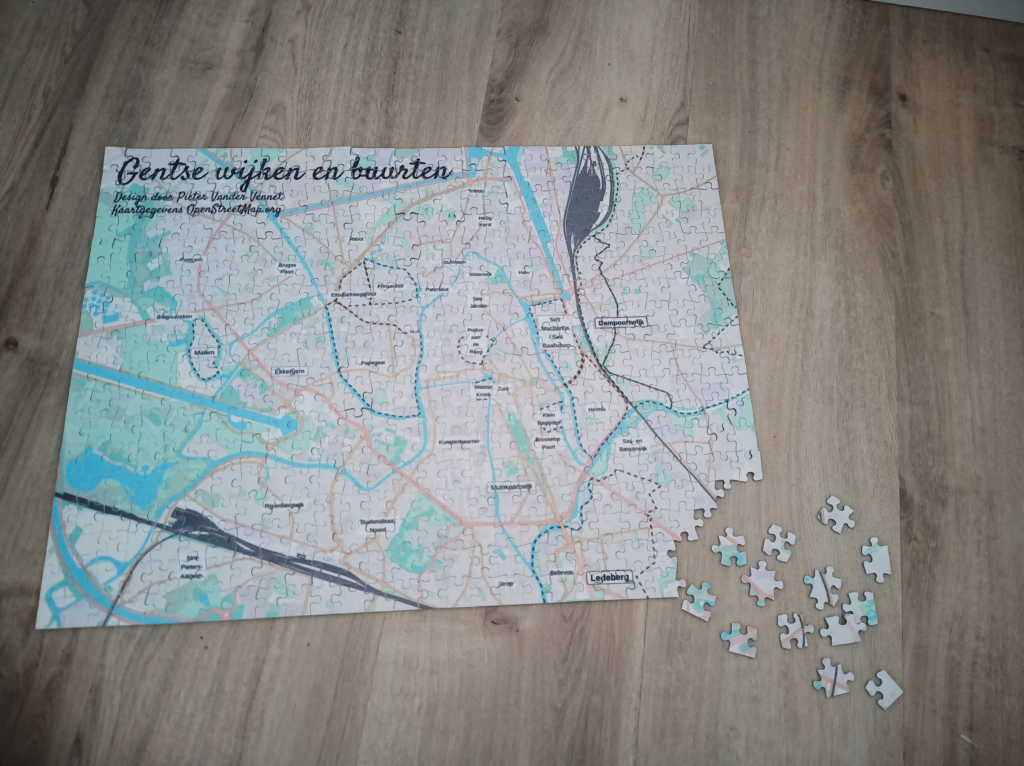
Pieter is a true map geek.
“I wanted to learn the names of the neighbourhoods in #Ghent, so I made me a #puzzle. I added the neighbourhoods in #OpenStreetMap , then made a custom theme in #MapComplete and use the ‘export as PNG’-functuon. The background is a modified stylesheet for @protomaps“
I did say true map geek!!
MapsintheWild The Neighbourhoods of Ghent, piece by piece
-
sur Real-Time Radiation Maps
Publié: 12 August 2024, 9:38am CEST par Keir Clarke
Yesterday a fire broke out at the Zaporizhzhia nuclear power plant in Russian occupied southern Ukraine. On hearing the news of the fire I almost immediately rushed to the Real-Time Radiation World Map in search of any detected spikes in radiation in the area.The Real-Time Radiation World Map visualizes radioactivity levels from Geiger counters around the world. Luckily, as you can see from the
-
sur Sean Gillies: Bear scratch
Publié: 12 August 2024, 2:28am CEST
I just emailed the Bear 100 race director, Cody Draper, and said that I'm injured and won't recover in time to start in 6 weeks. I'm also too injured to do Black Squirrel in 3 weeks and will be emailing Nick and Brad next.
What's the injury? When I came home from vacation and started to ramp up my running, my right Achilles tendon became sore and very inflamed. On July 17 I went out for a 30 mile run and had to bail at mile 20. I took some time off from trail running and have been chugging on an elliptical trainer at my gym. Yesterday I tried some running on the bike path behind my house and couldn't even go a mile without excruciating pain. I'm calling it, my season is over. The last time I had serious Achilles tendonitis like this was at the end of my ultimate frisbee career 20 years ago. It took 4 months before I could run without pain. I'm going to keep going to the gym, ice and rest, see some specialists, and get ready for 2025.






